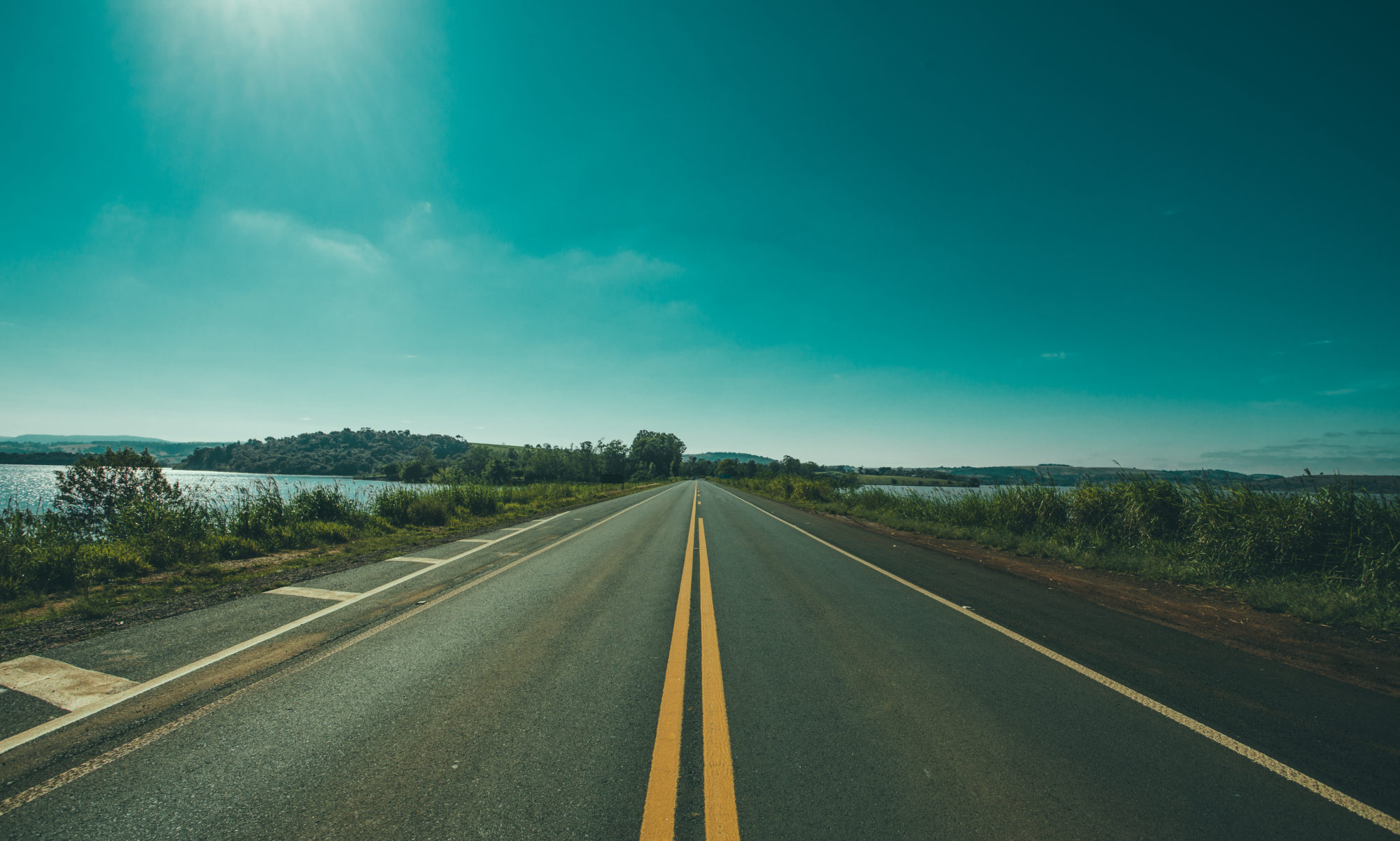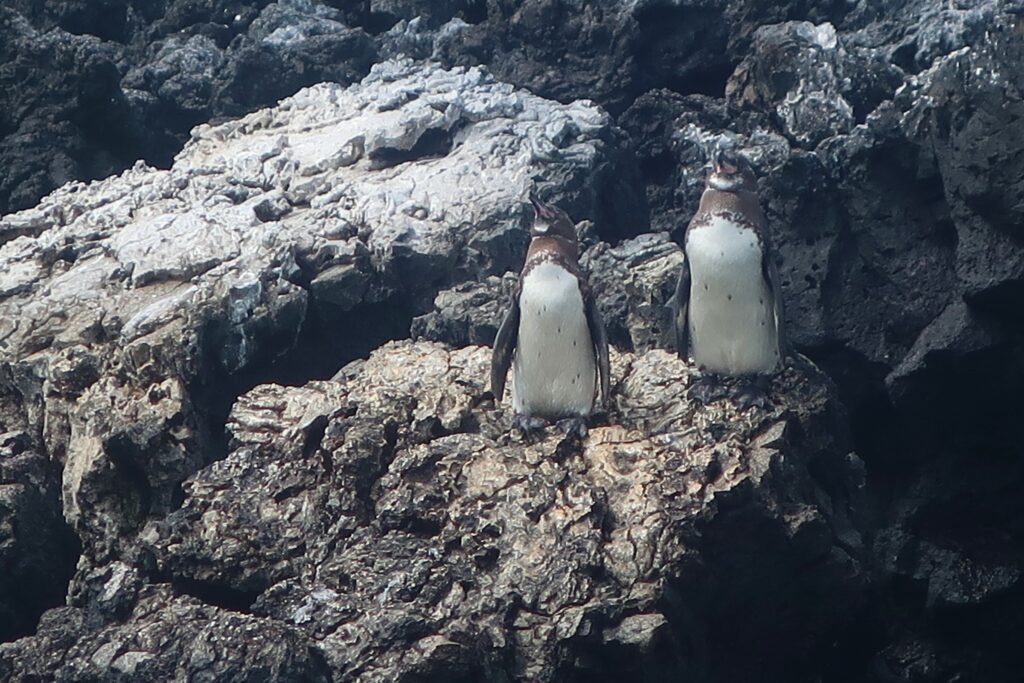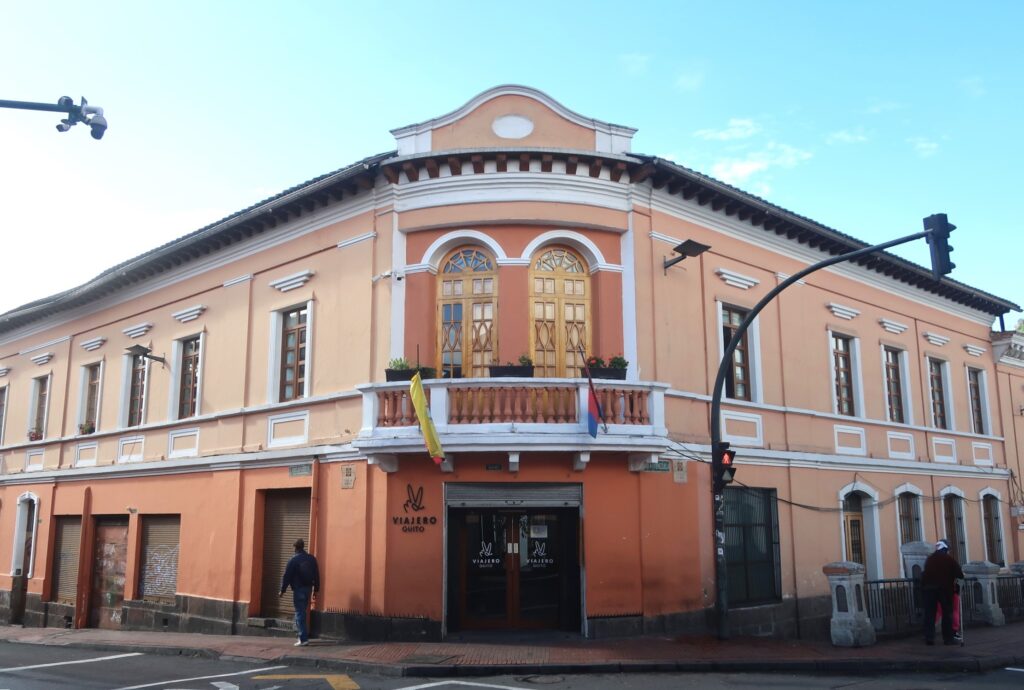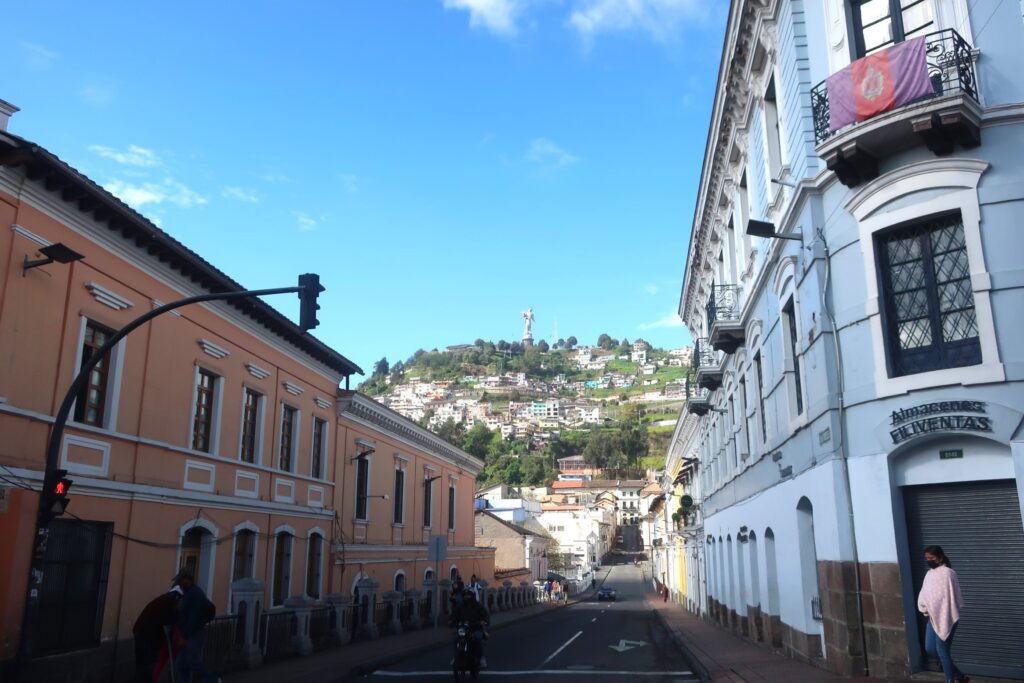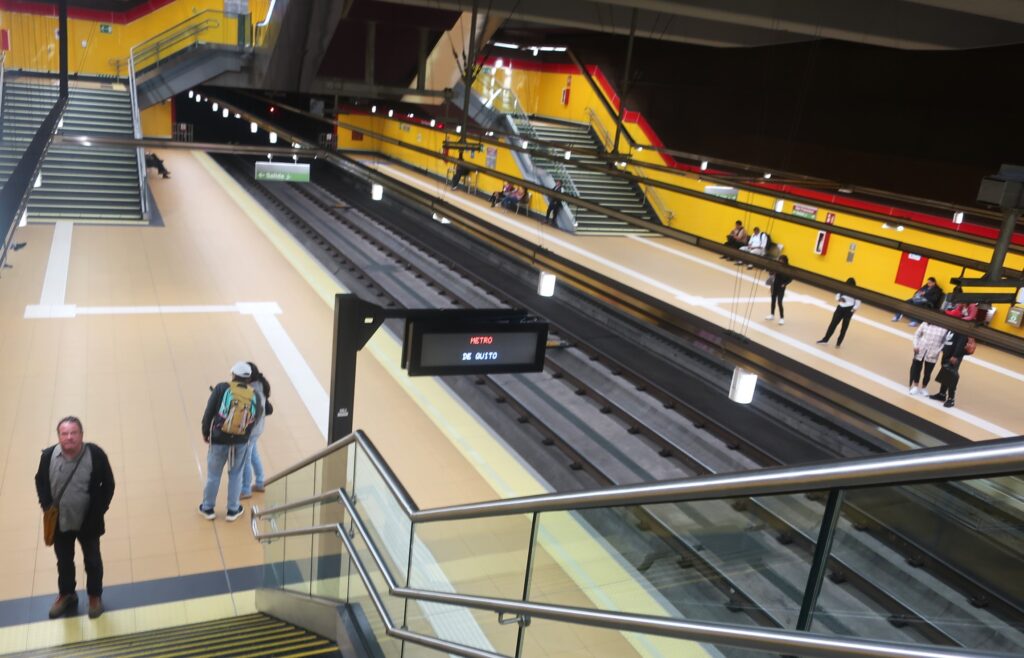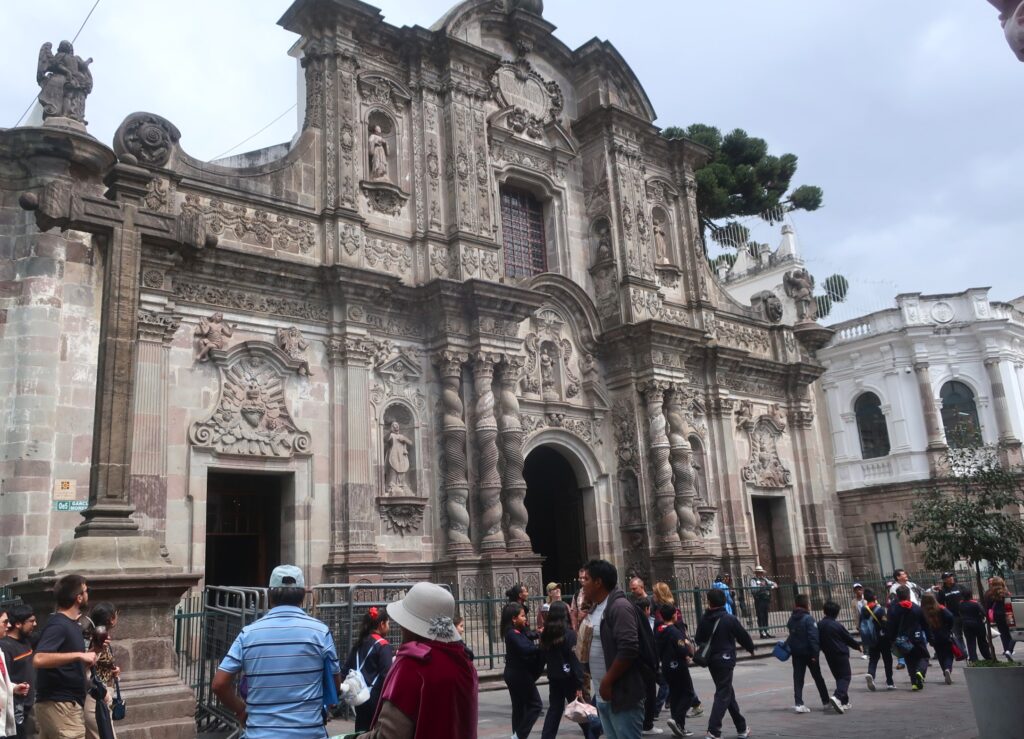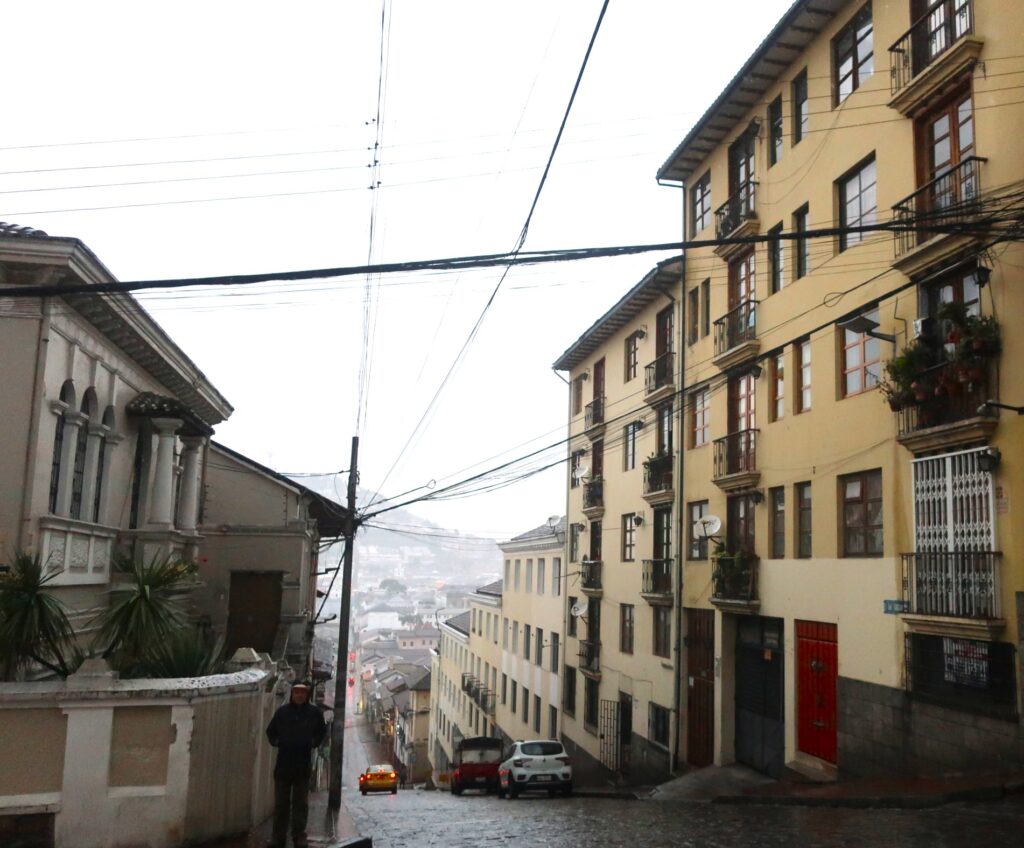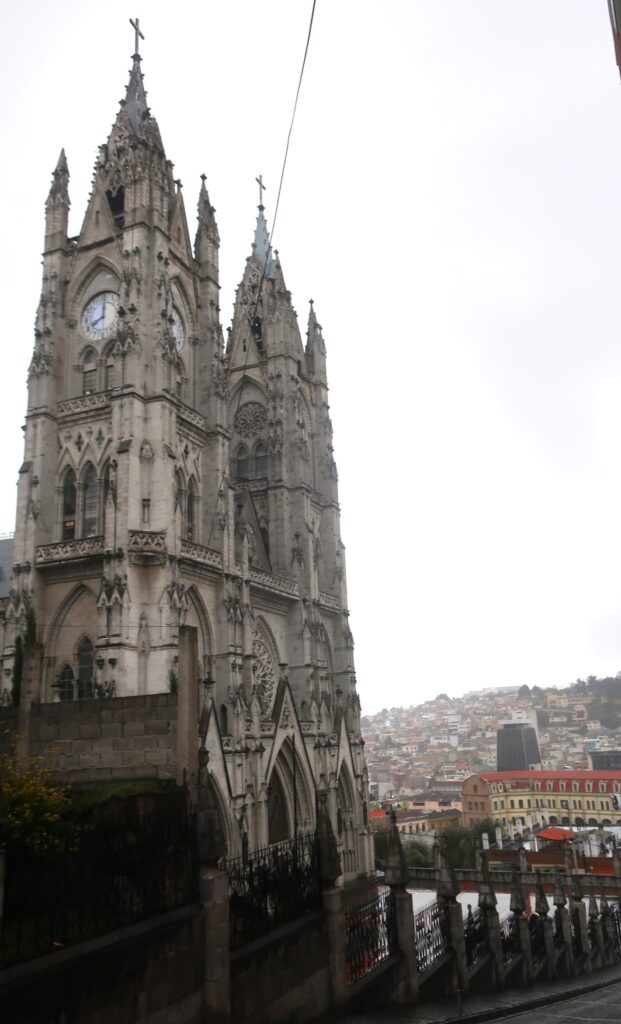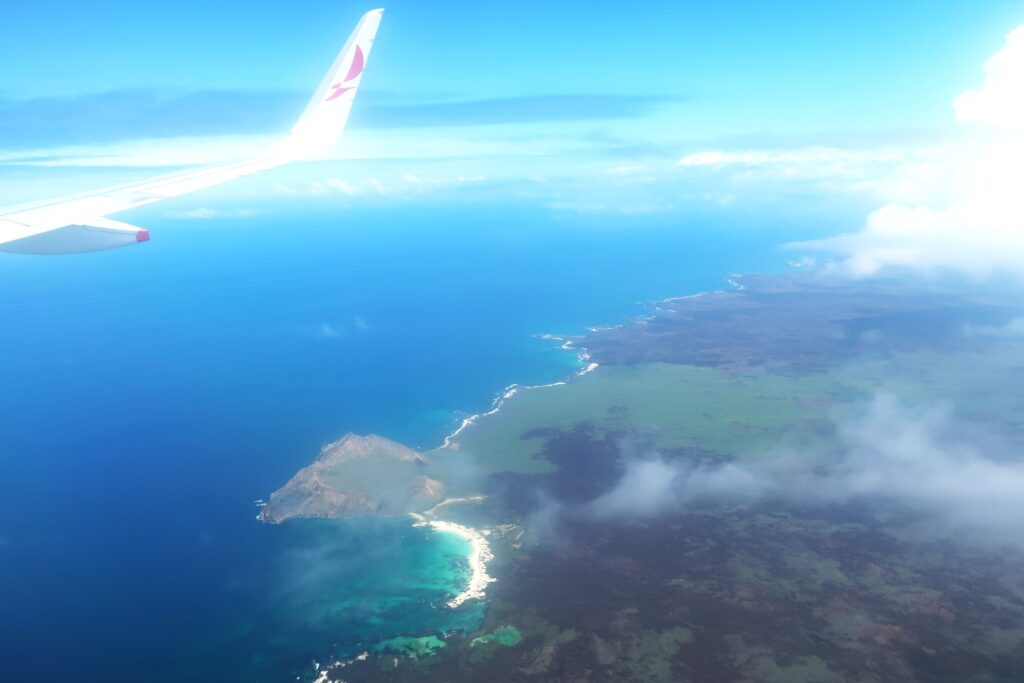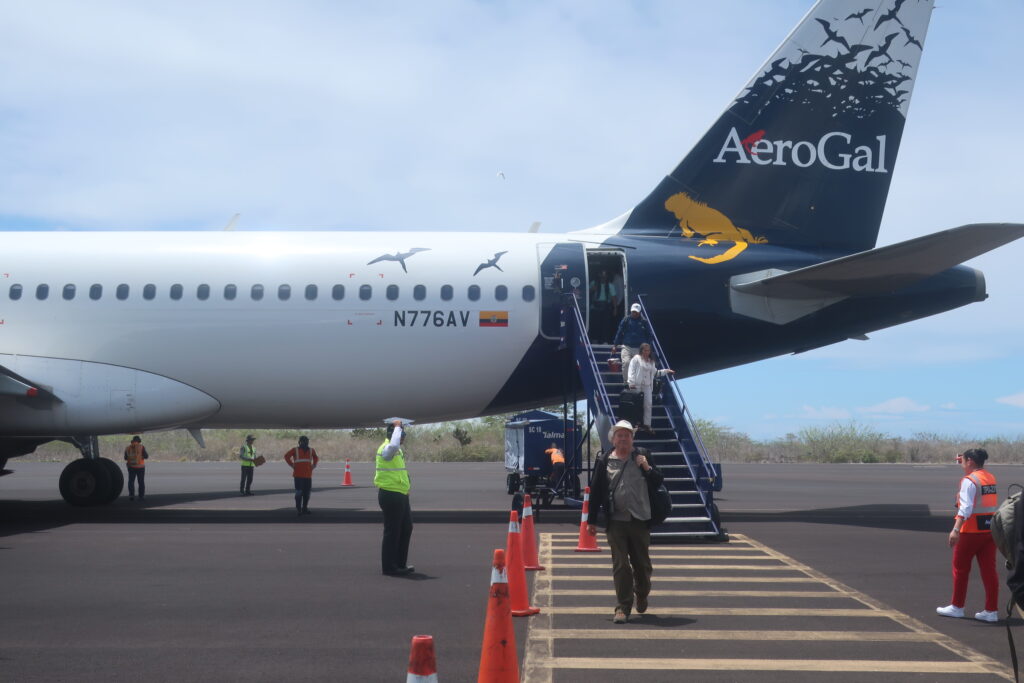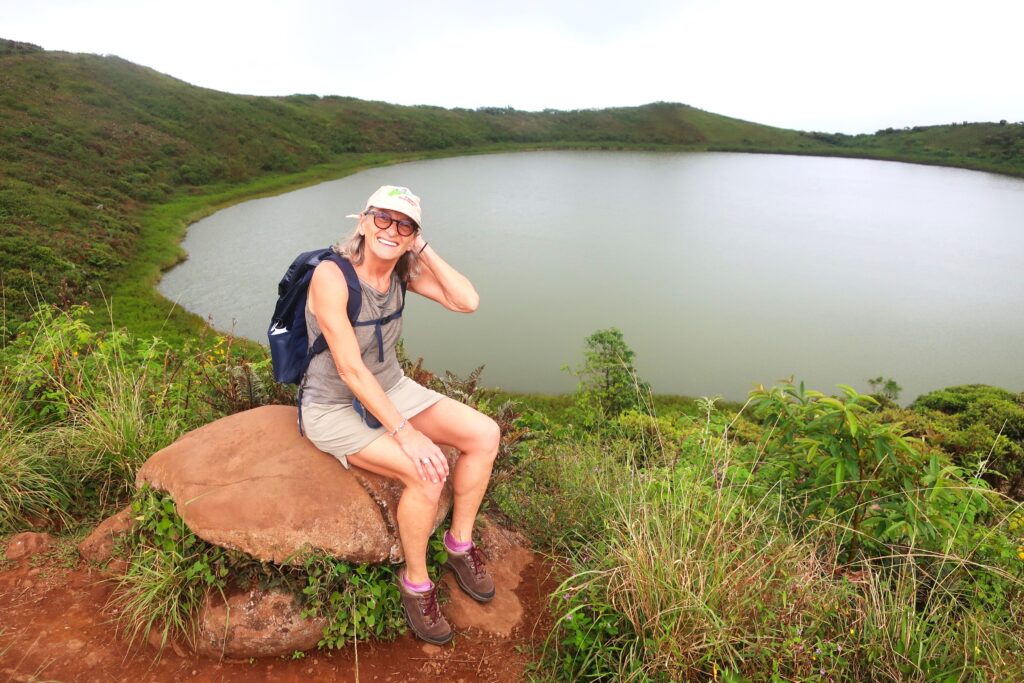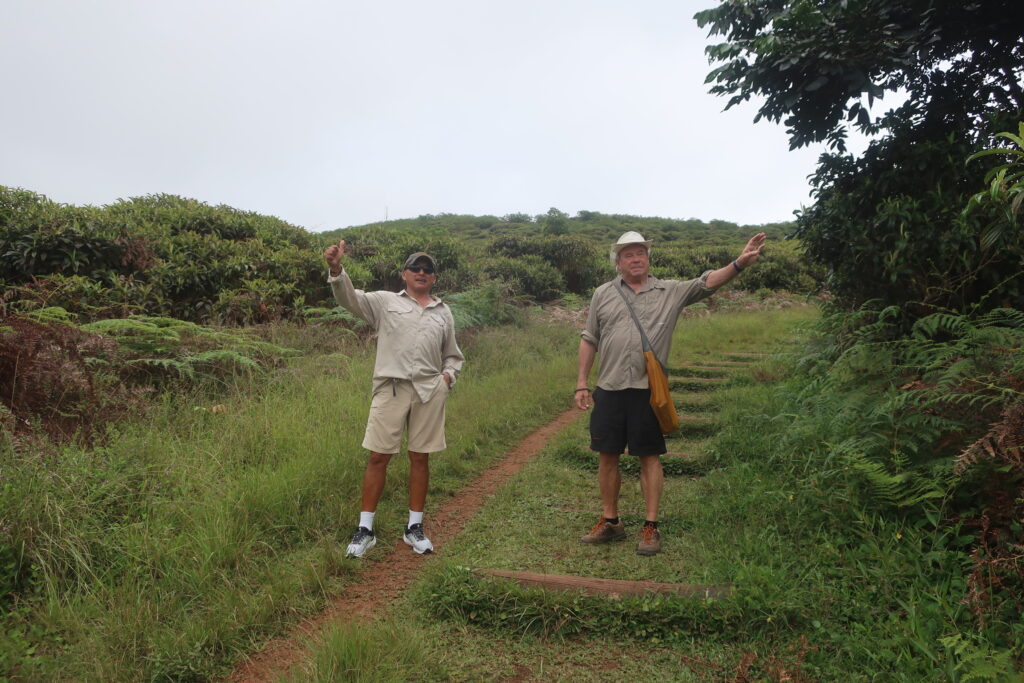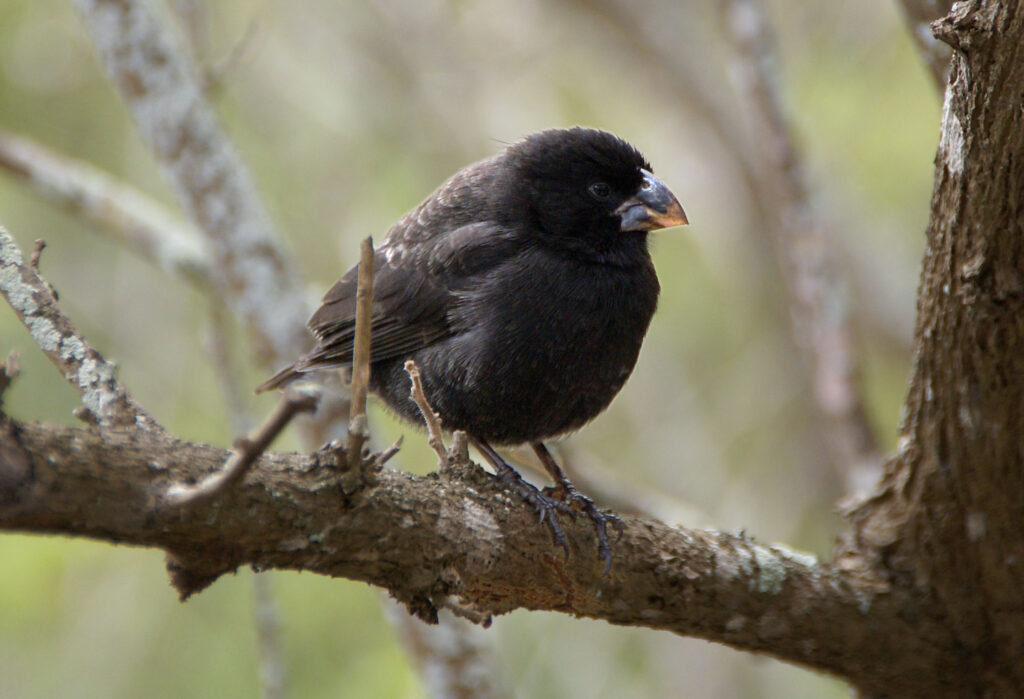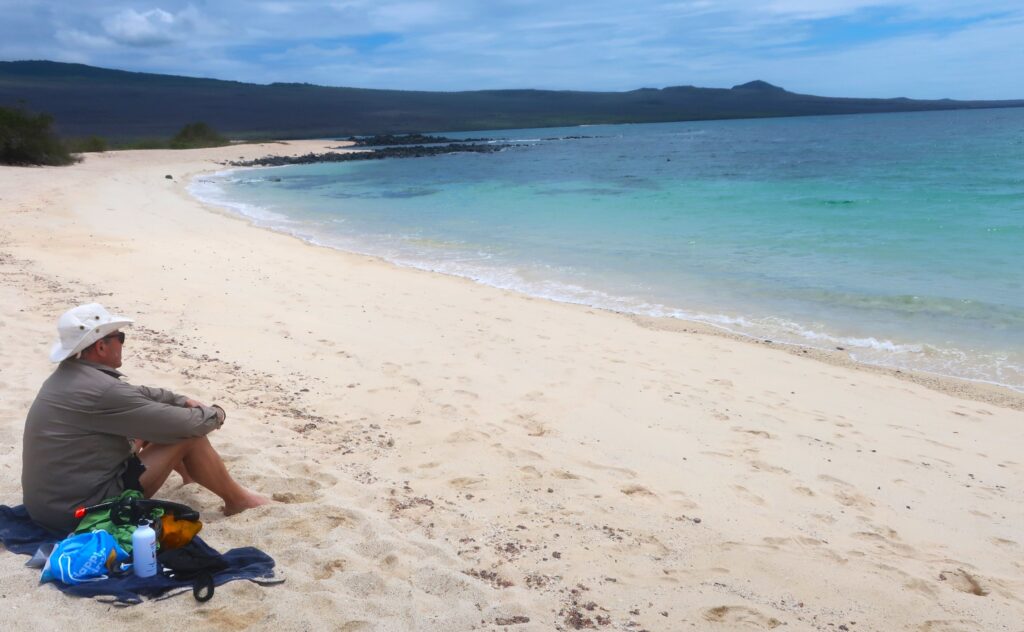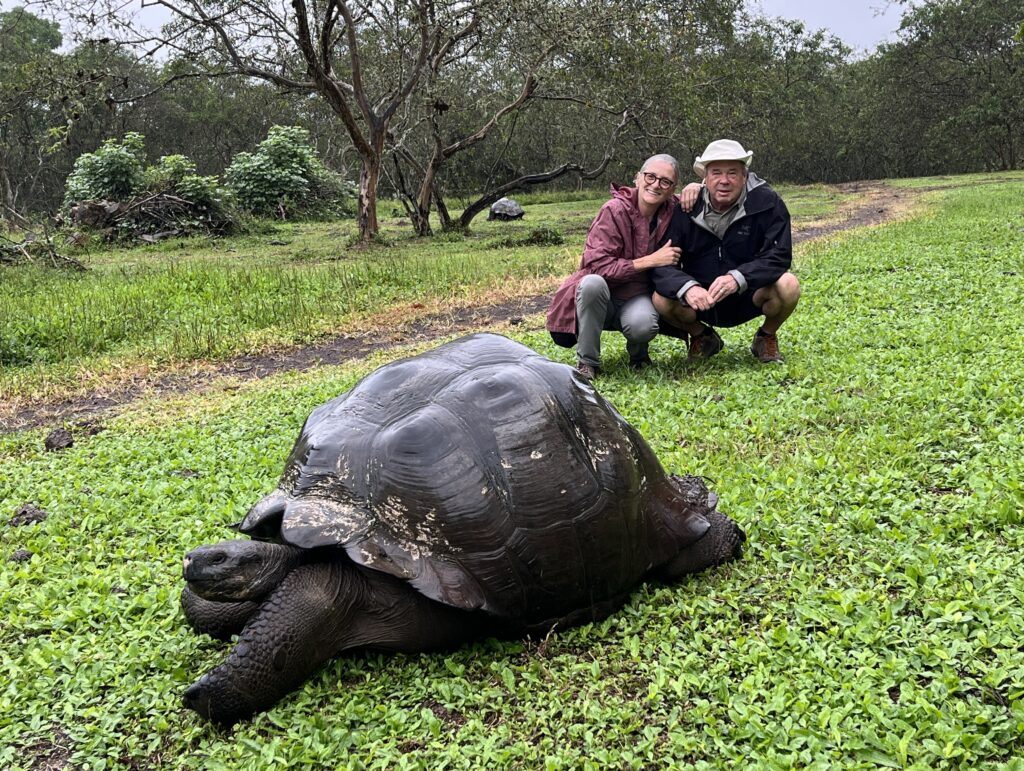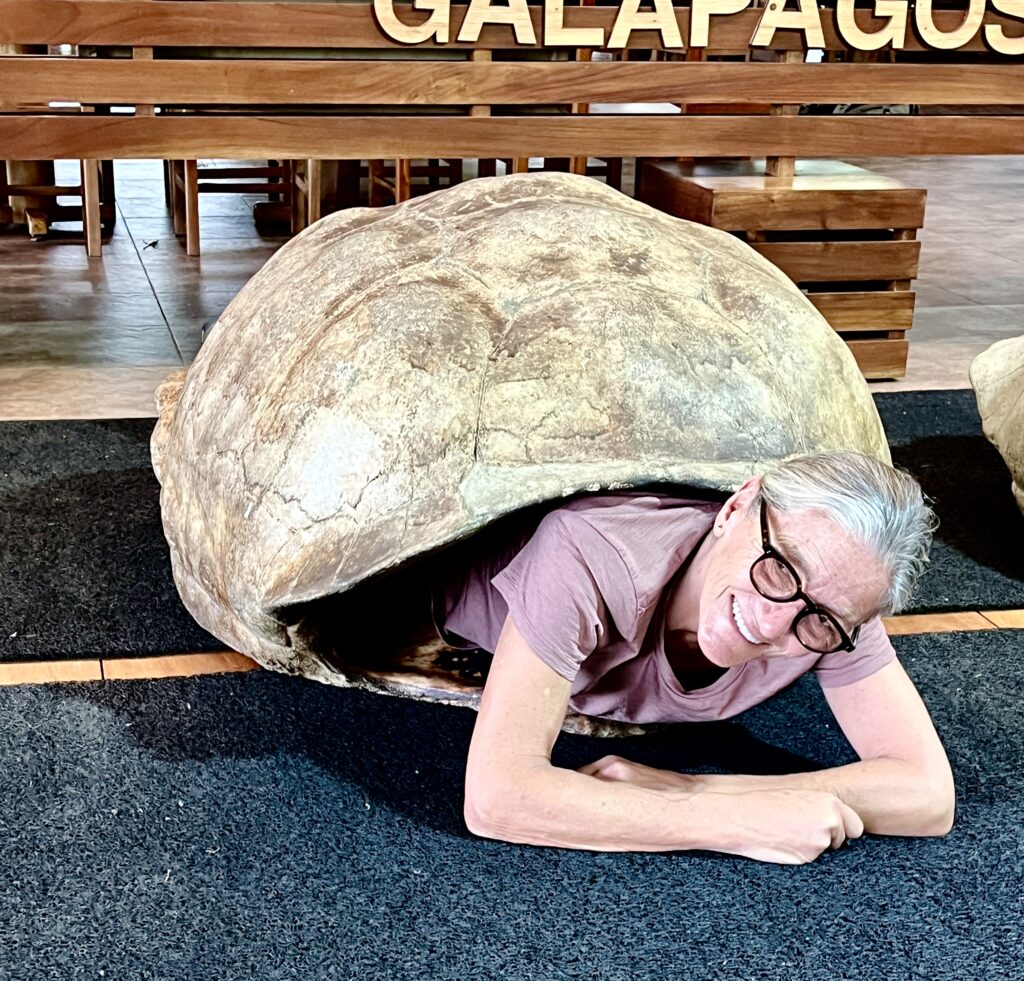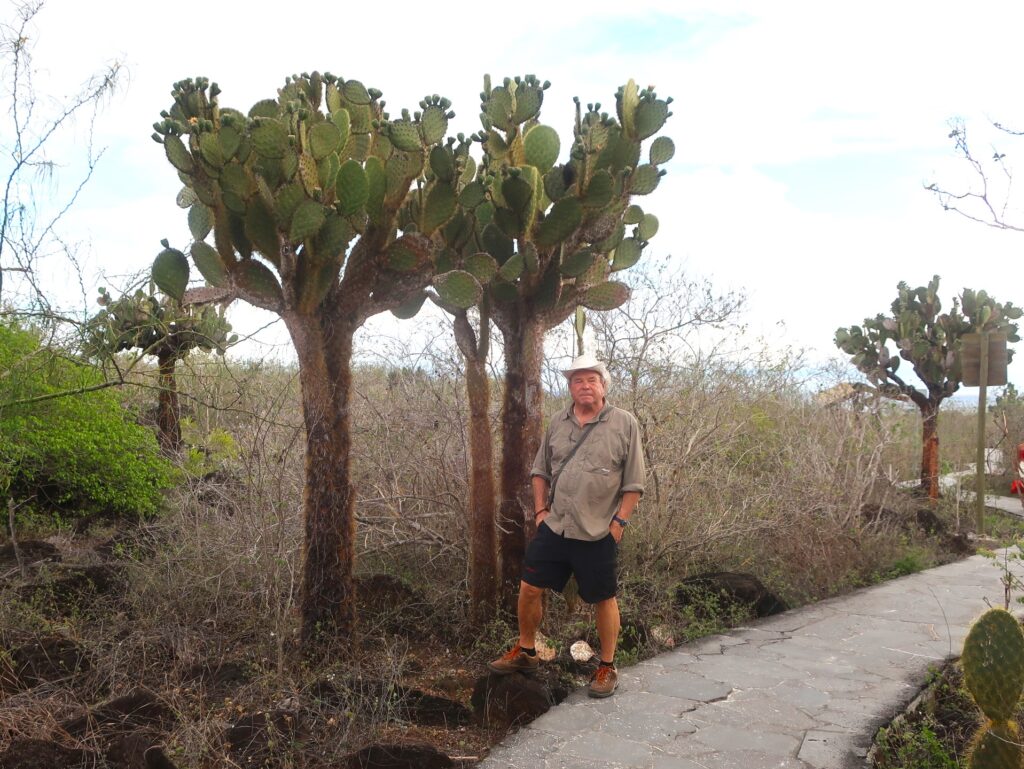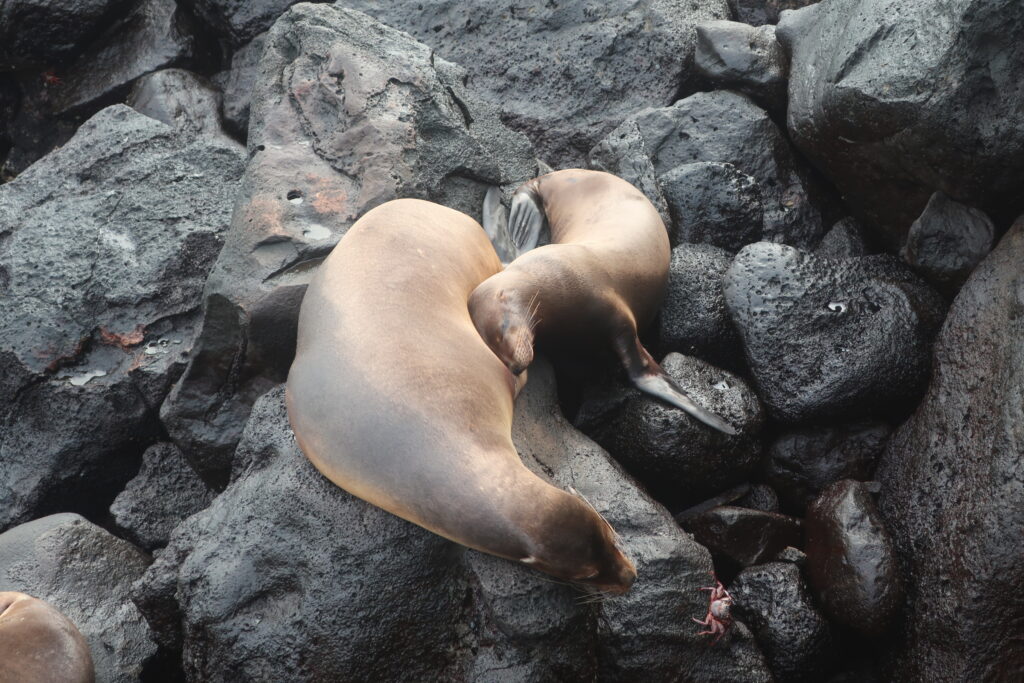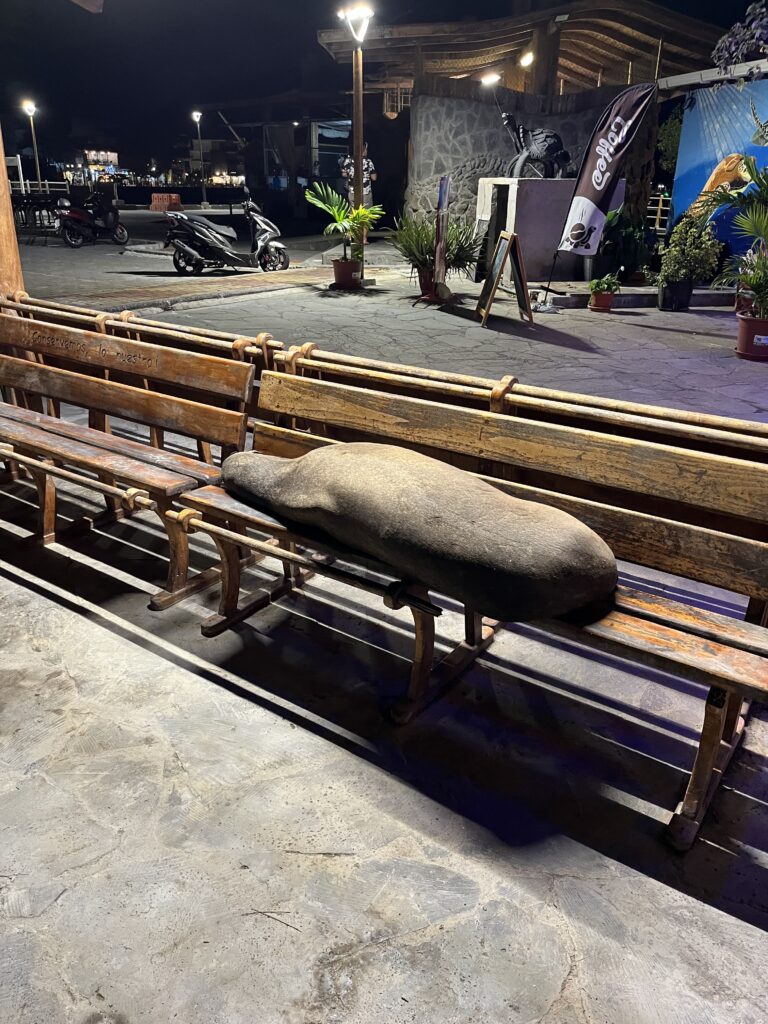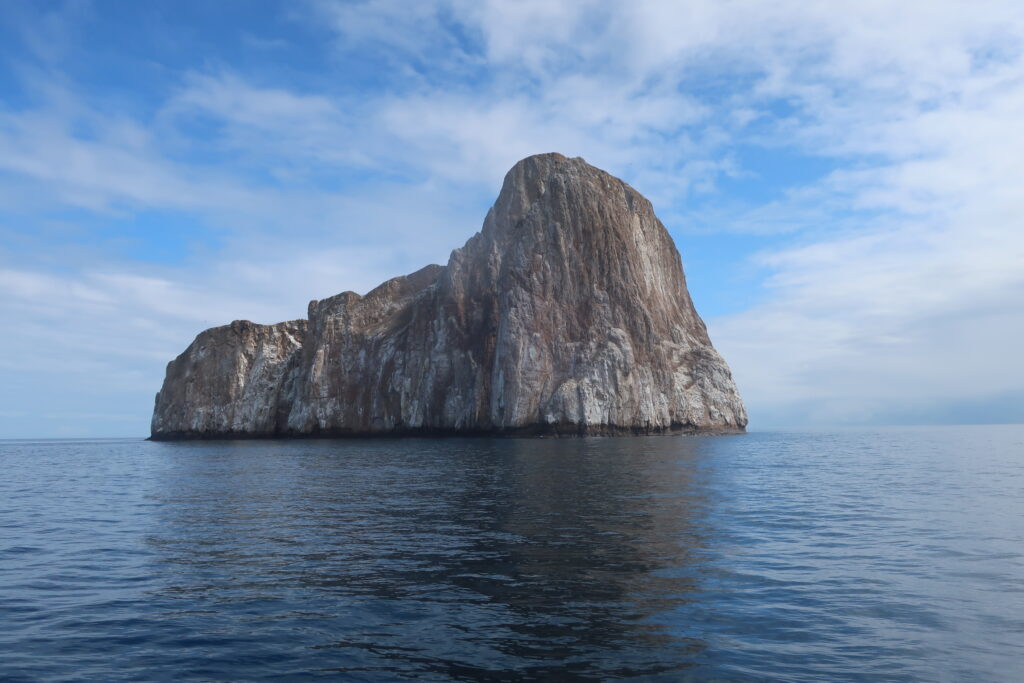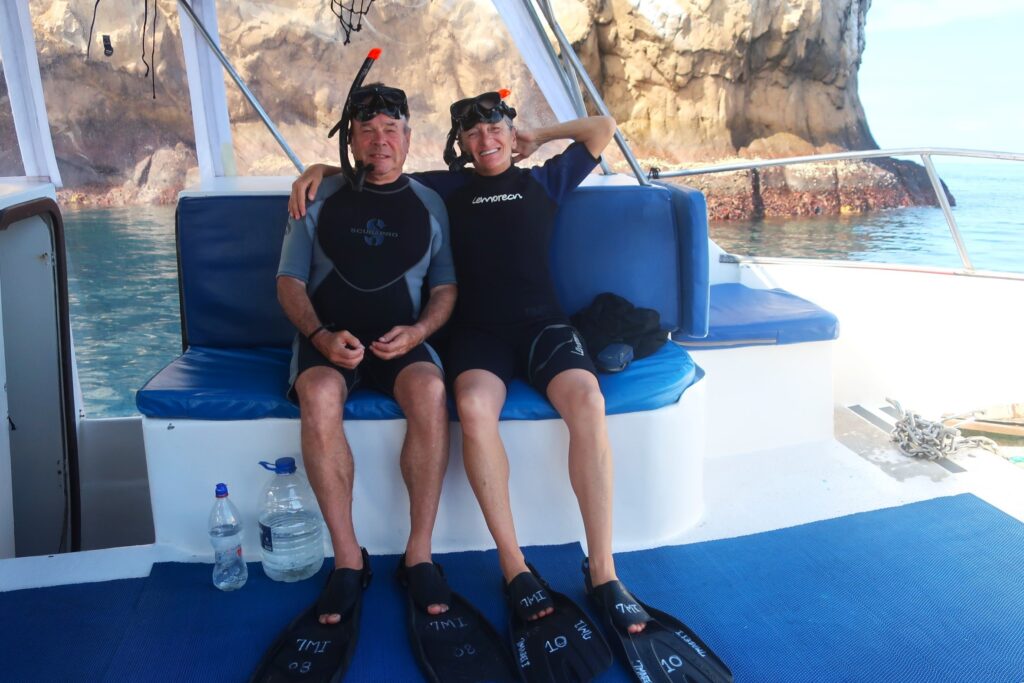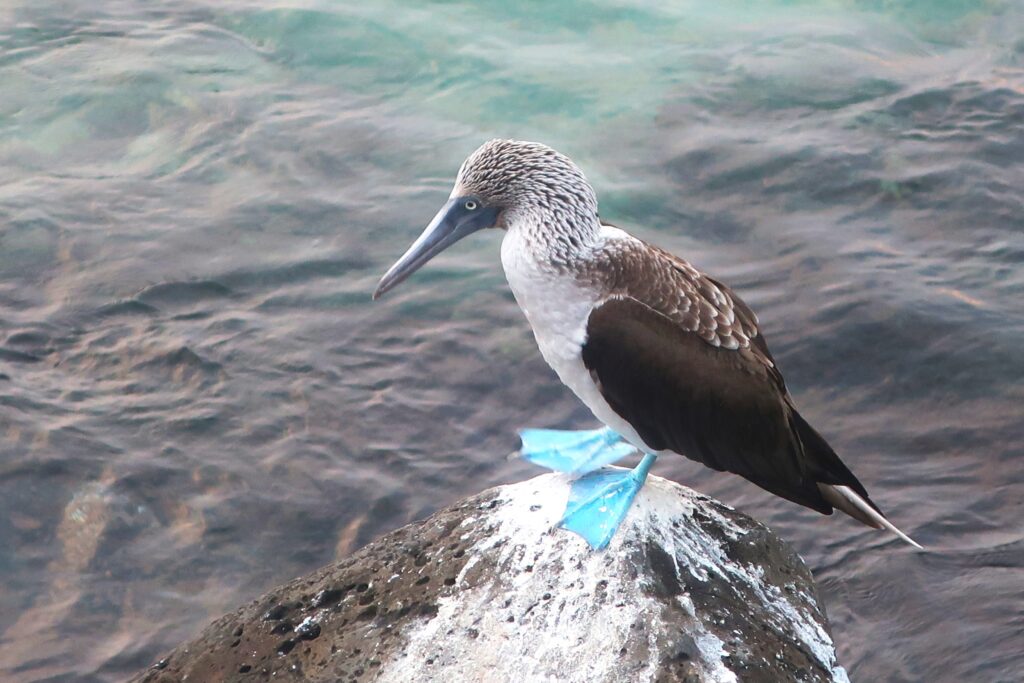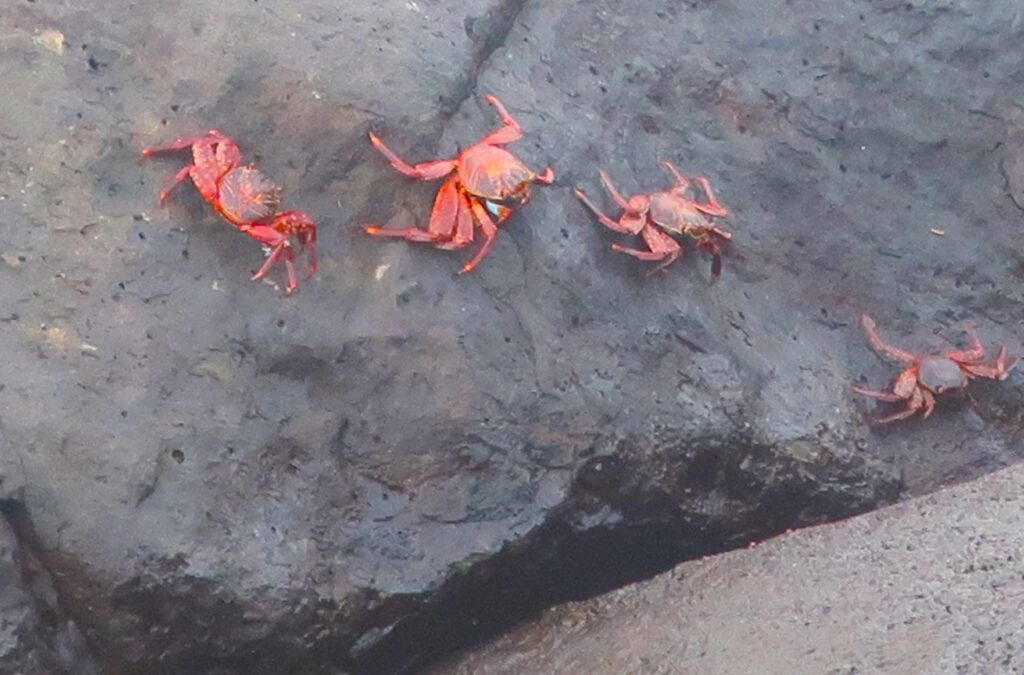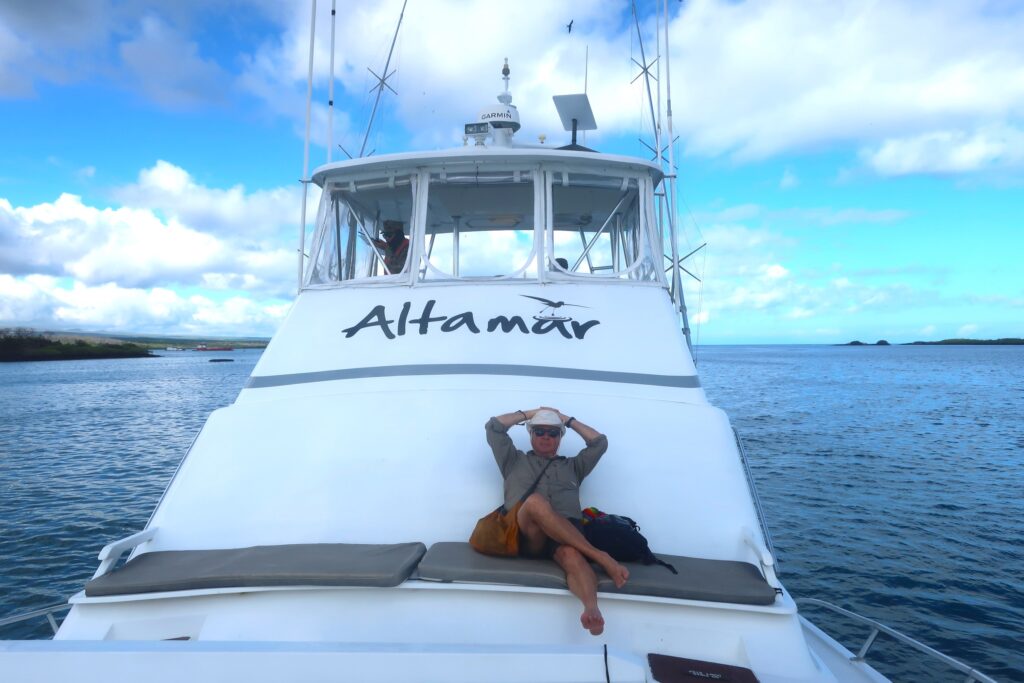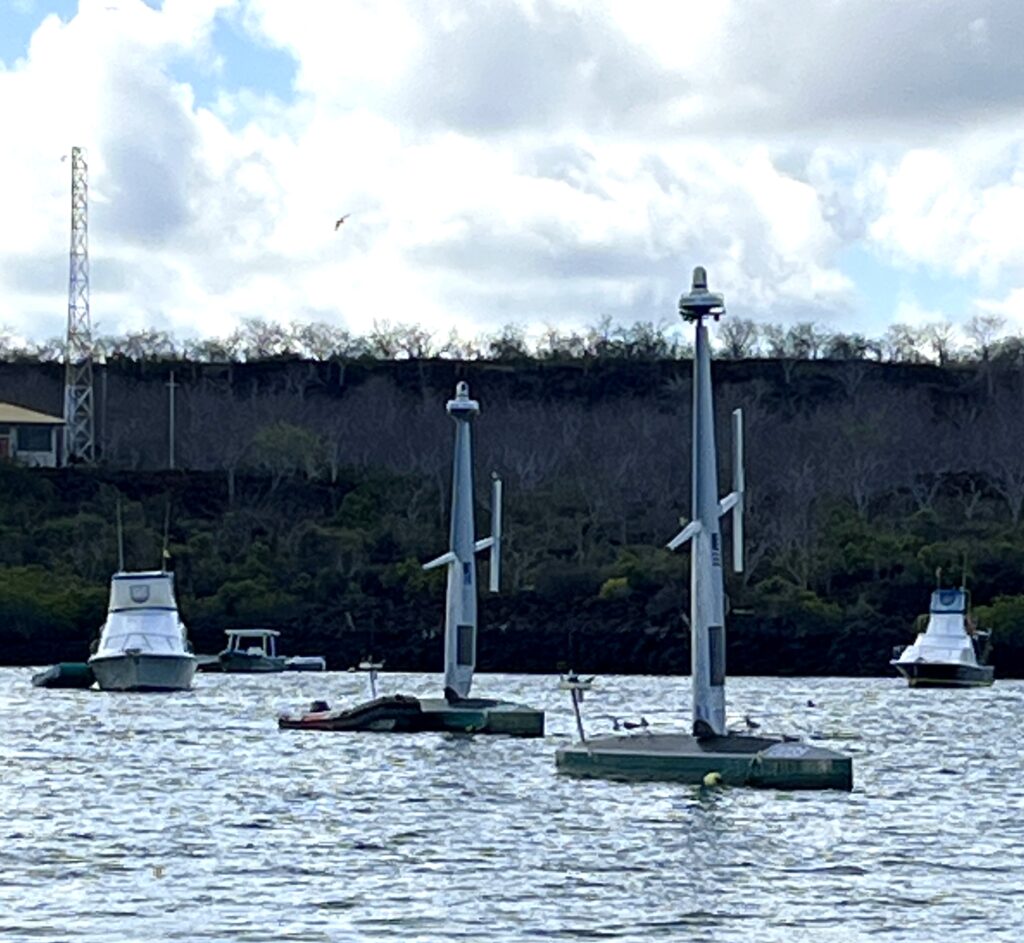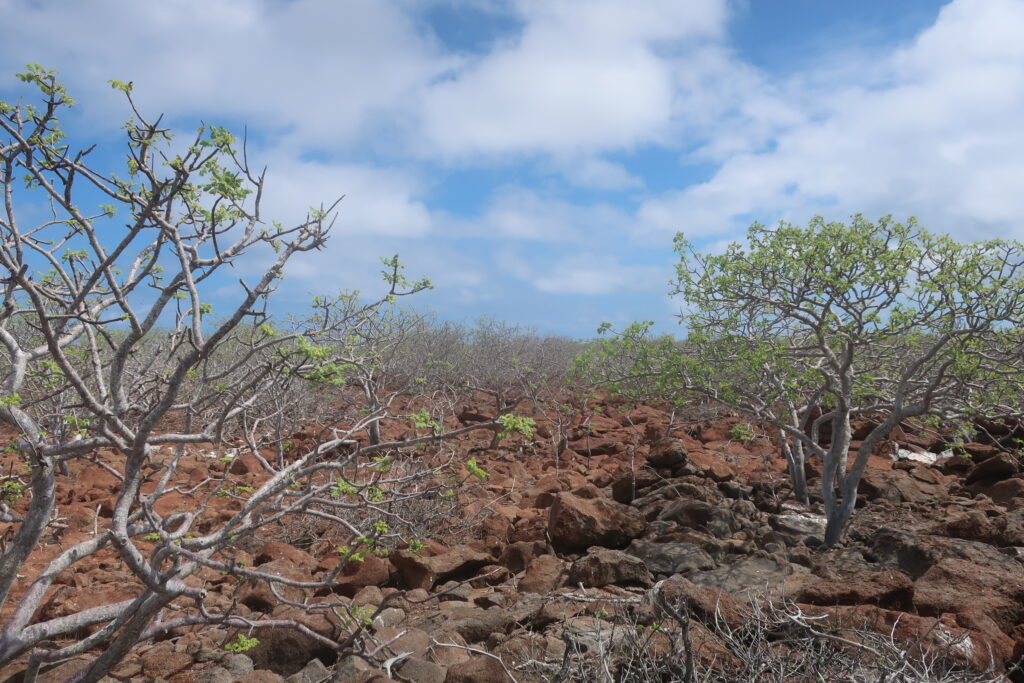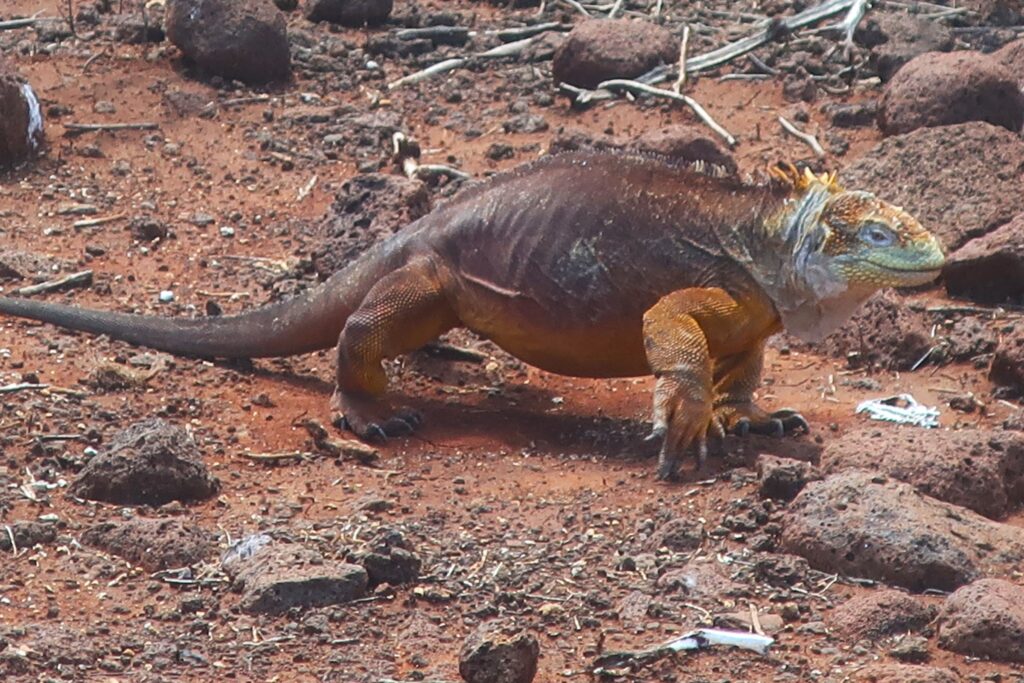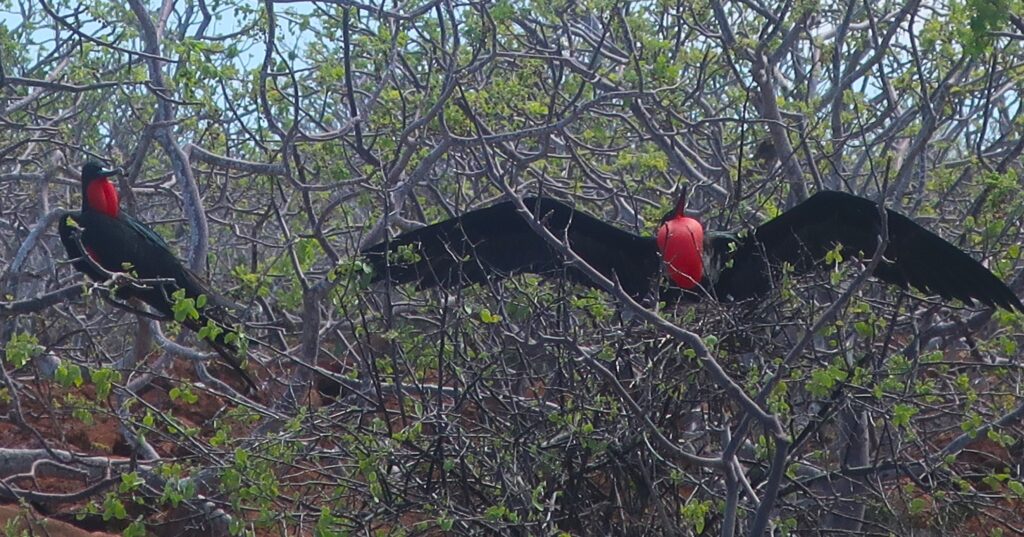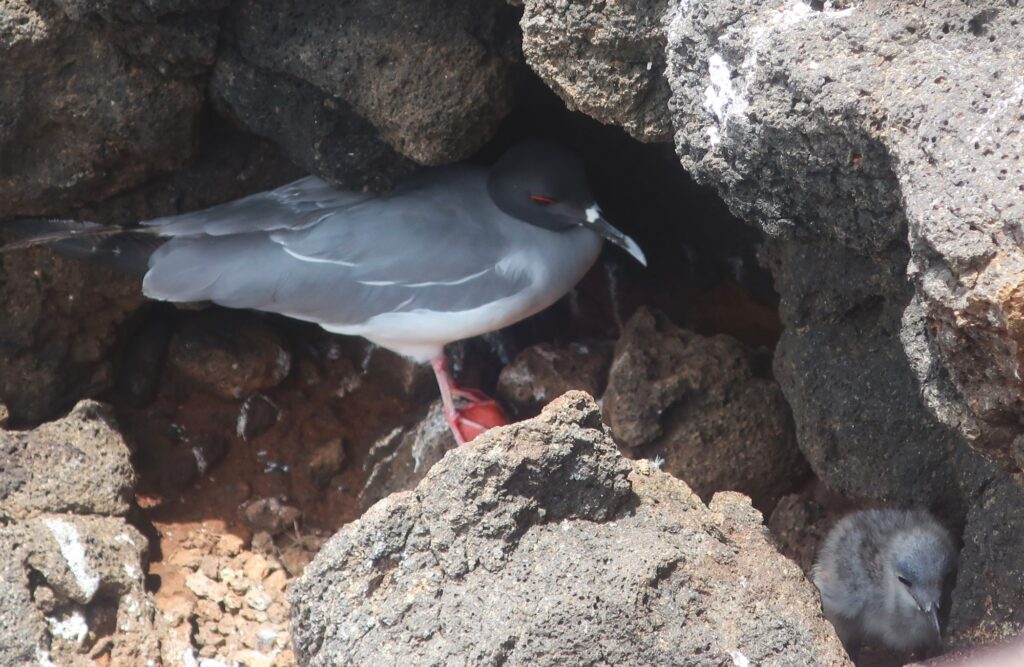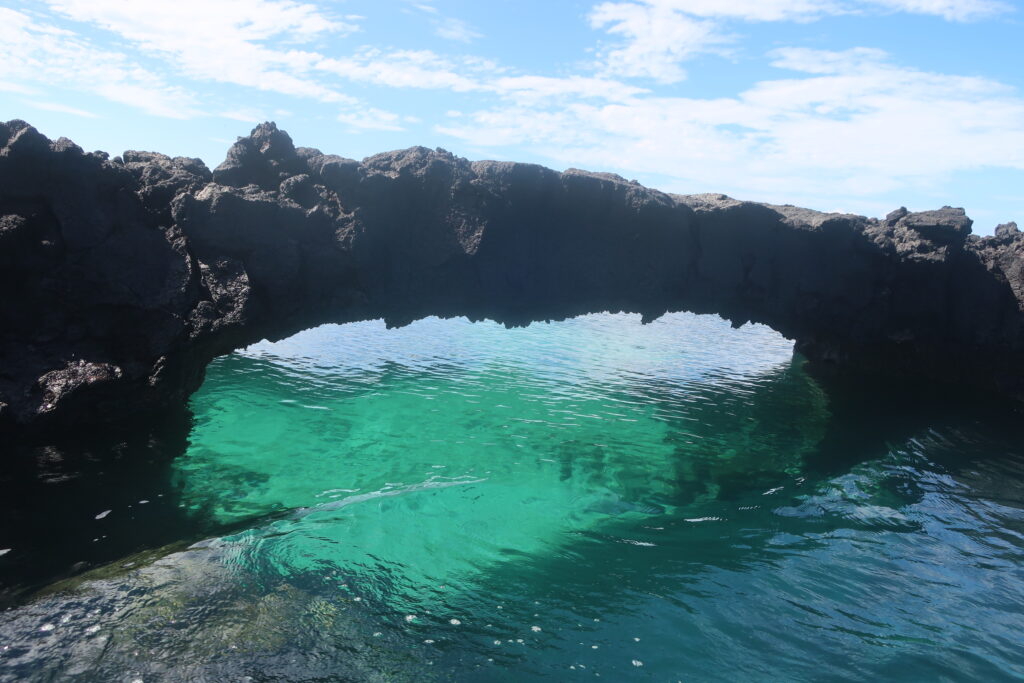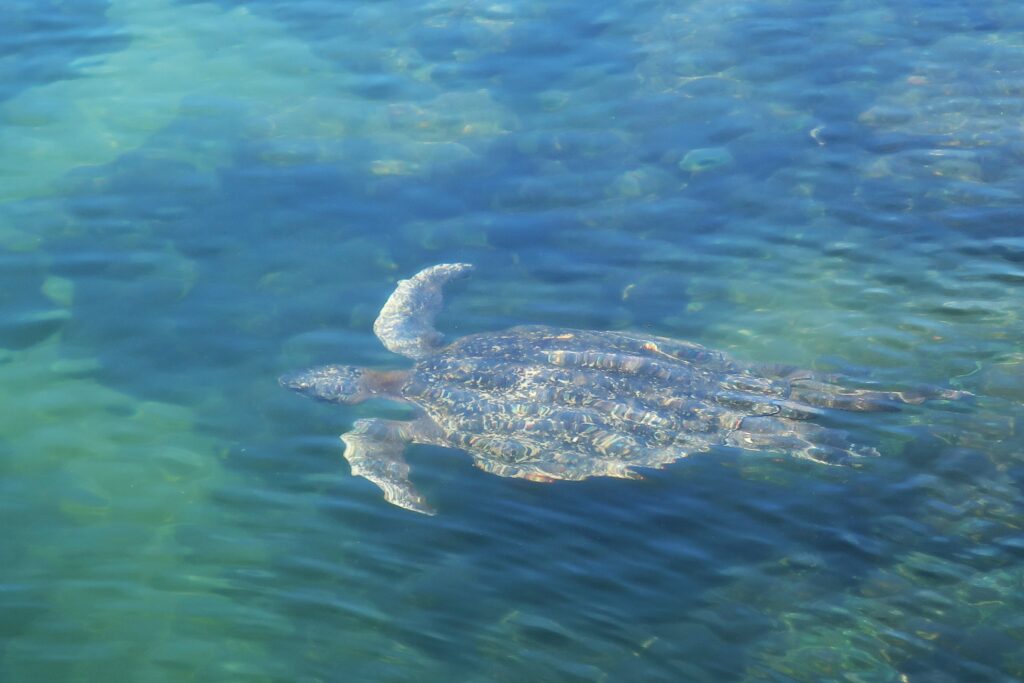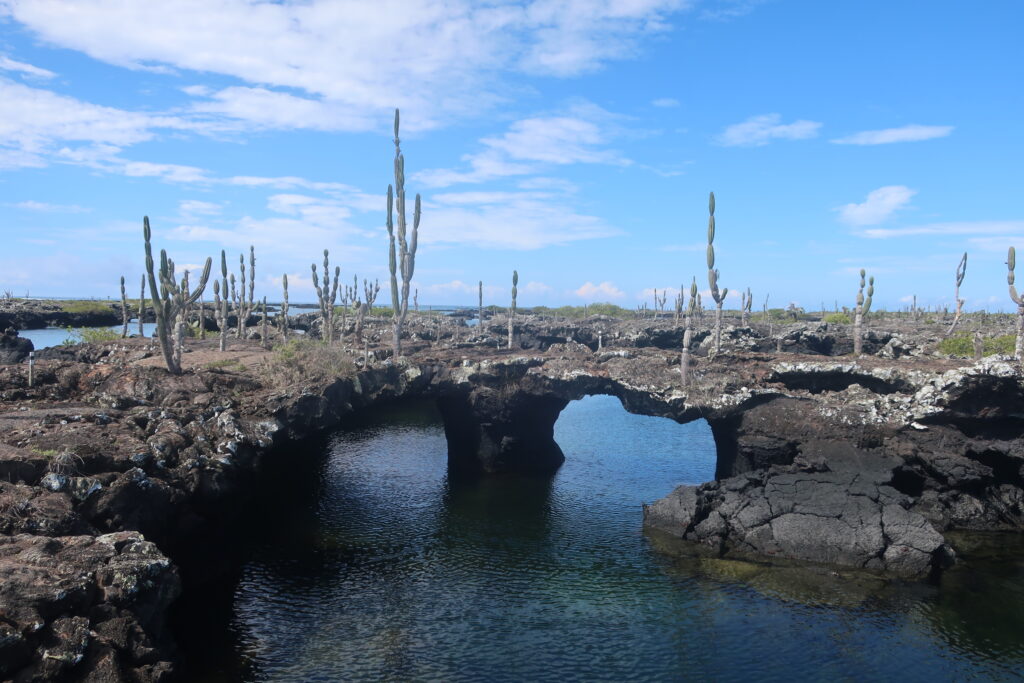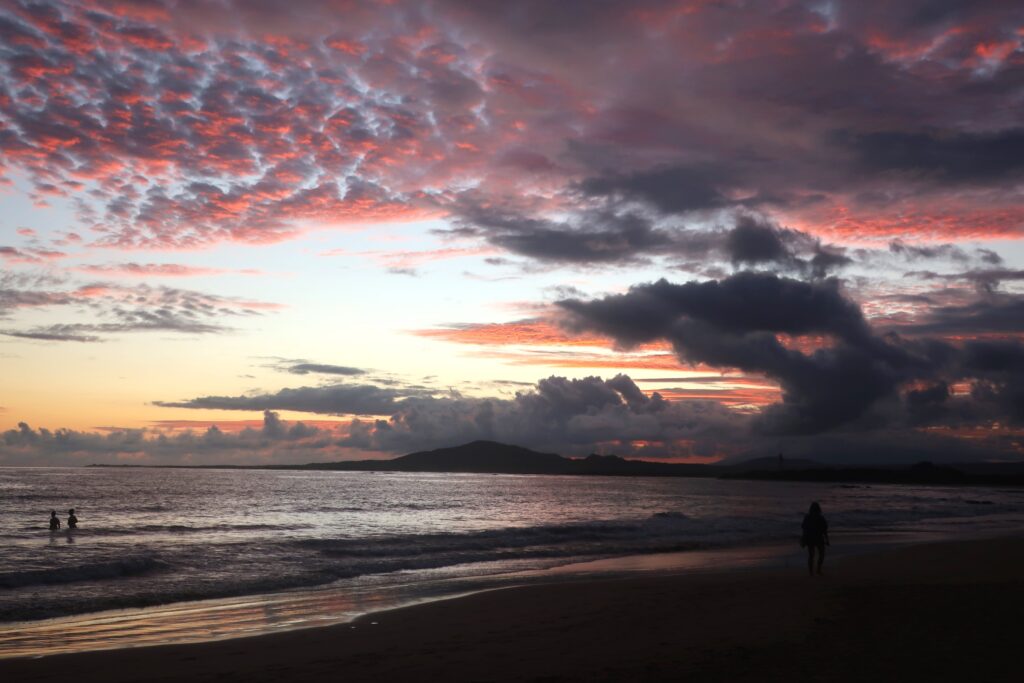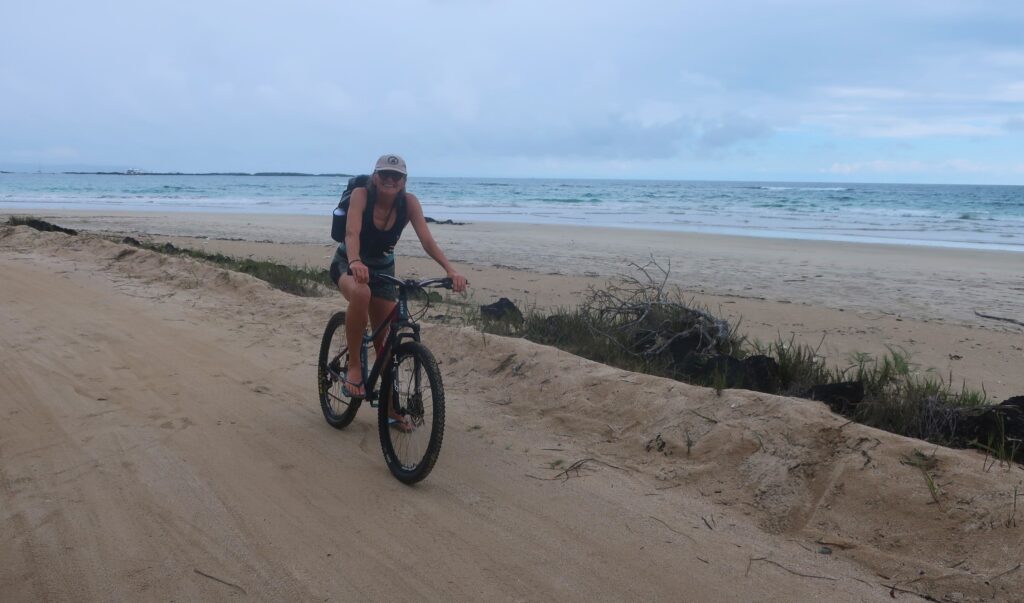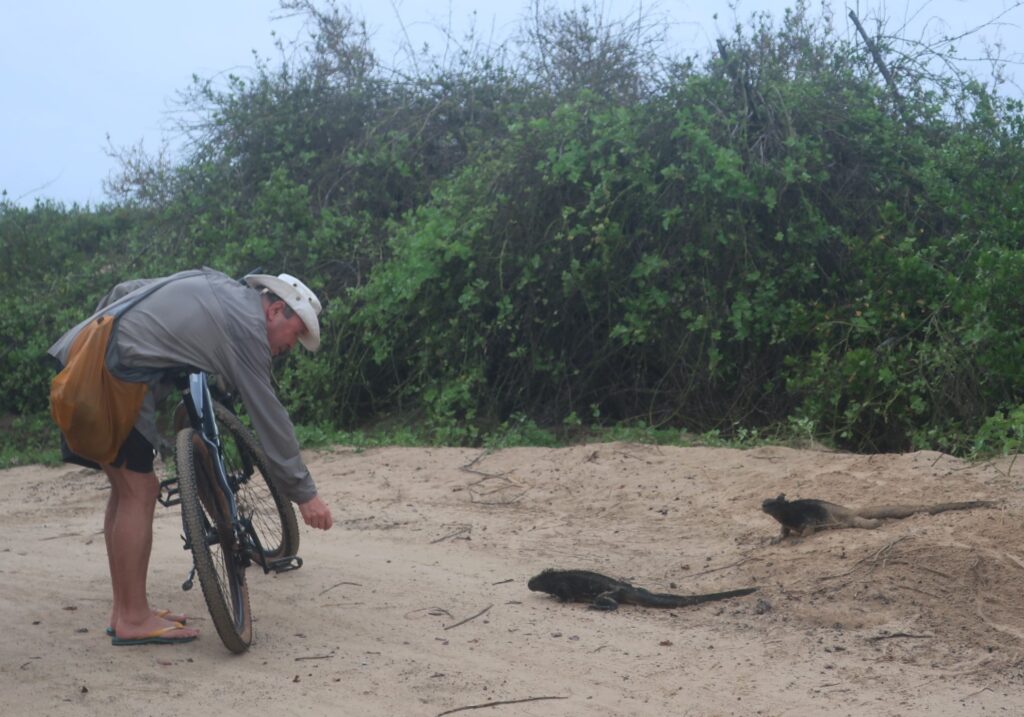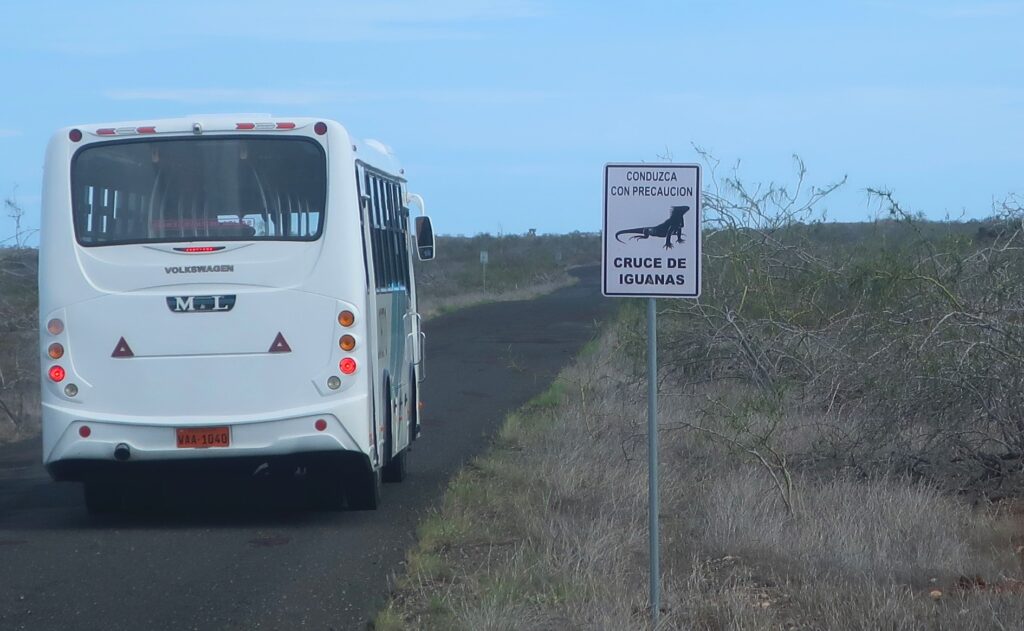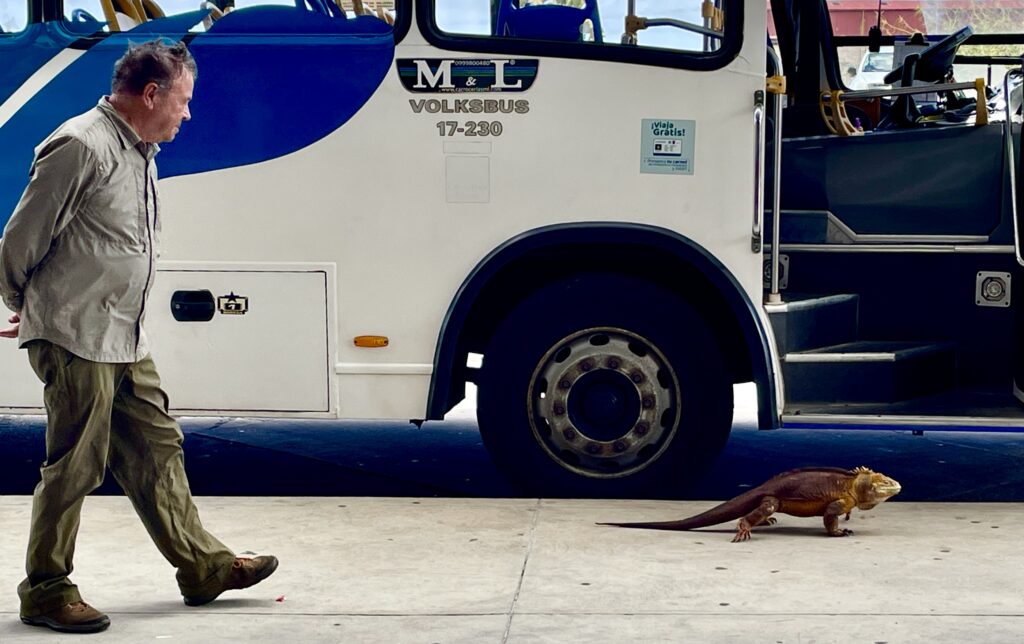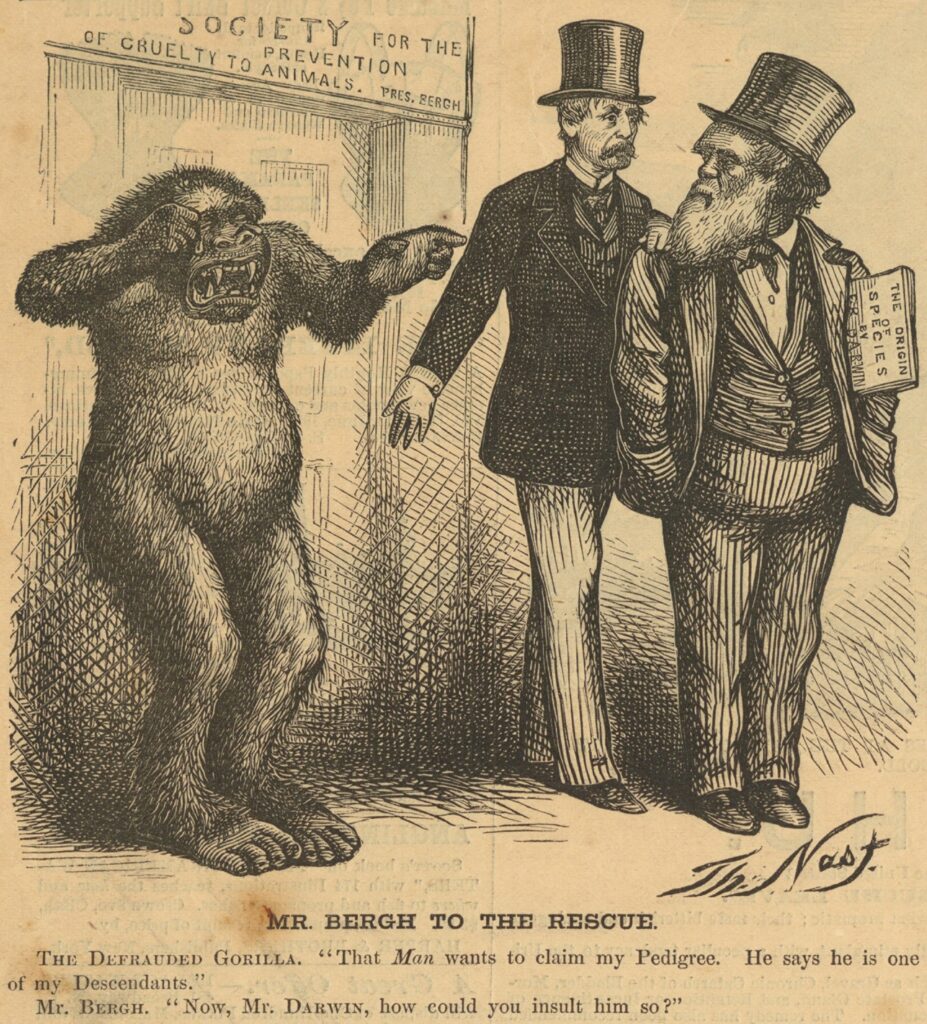This is a pet peeve of Colombians – people mispelling the name of their country. It’s as if people insisted on spelling ‘Canada’ as ‘Canida’.
We take a bus from Quito to the Colombian border, after overnighting in Otavalo, a town famous for its extensive market.
One uneventful border crossing later, our first town in Colombia is Ipiales. From there, we take an all-day bus ride to the city of Popayán.
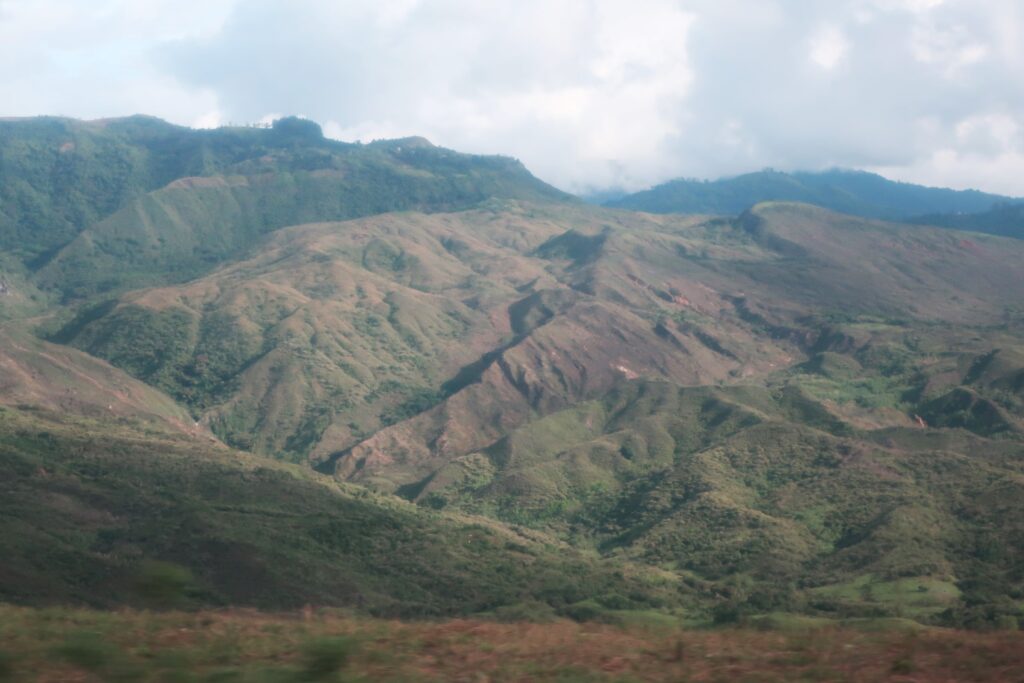
You’re never far from a mountain range in Colombia. It’s very scenic.
Popayán is a pleasant small city with the usual colonial district.
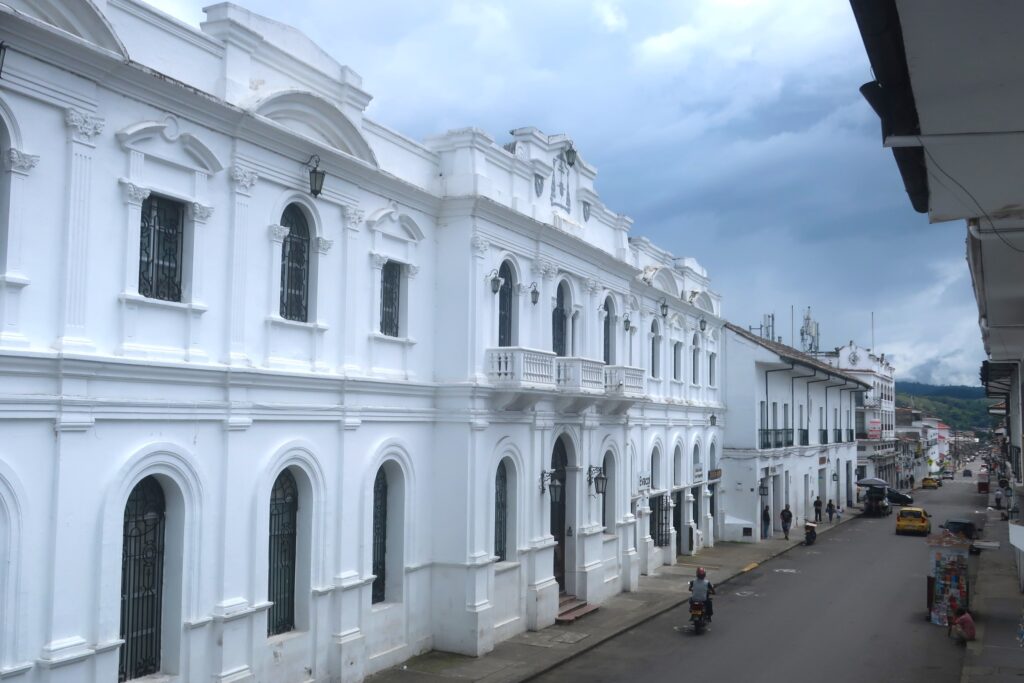
We are surprised at how economical accomodation costs in this part of the world. In Popayán, for instance, we pay 26 dollars – Canadian! – per night for a private room with an ensuite bathroom. (Mind you, our standards are not very high.)
There are lots of churches. This one is the Basilica of Our Lady of the Assumption.
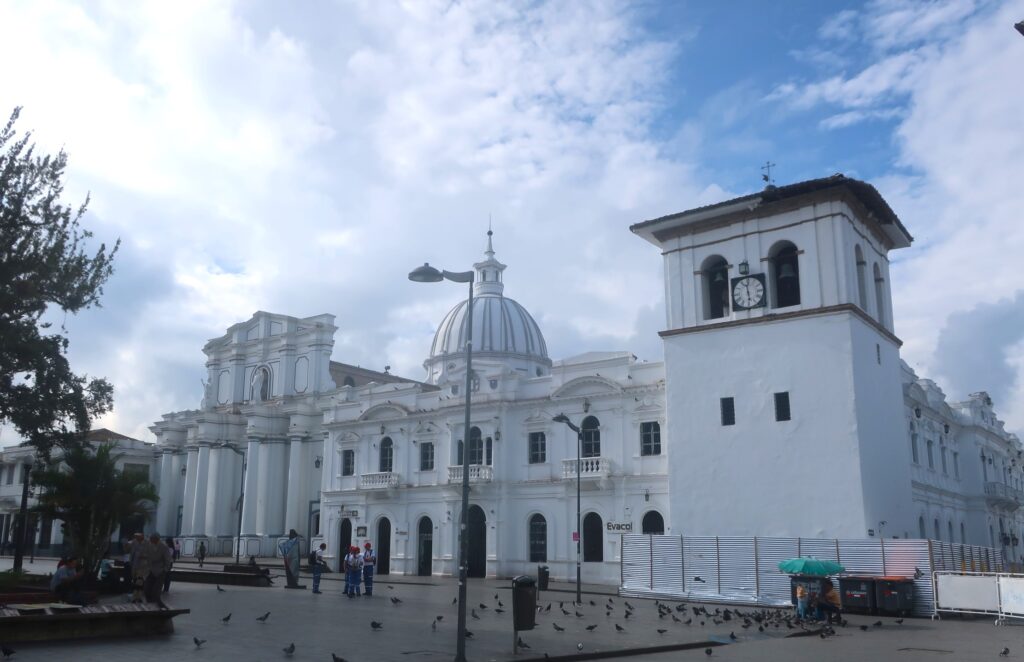
This church, among others, was severely damaged in a 1983 earthquake, an event depicted in a Fernando Botero painting. (Spoiler alert – we see this painting in the the excellent Botero museum in Bogotá.)
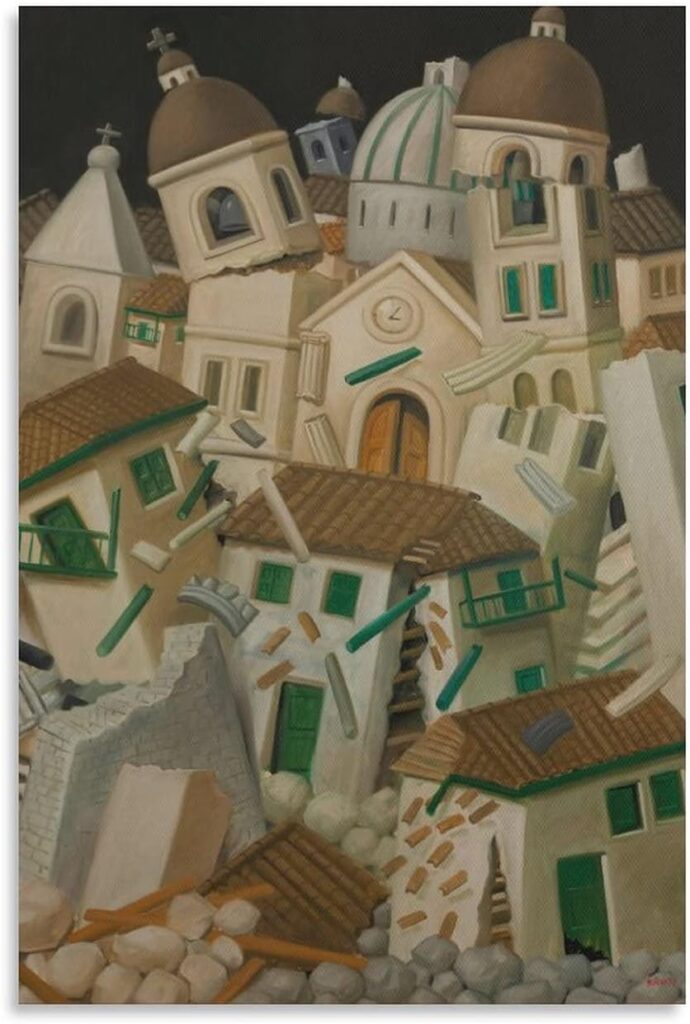
The Parque Caldas is the ever-popular centre of town. We have a great lunch, and people-watching from the balcony.
This is a Latin-America-wide custom: going for a leisurely paseo around the town square. Even the smallest village has one.
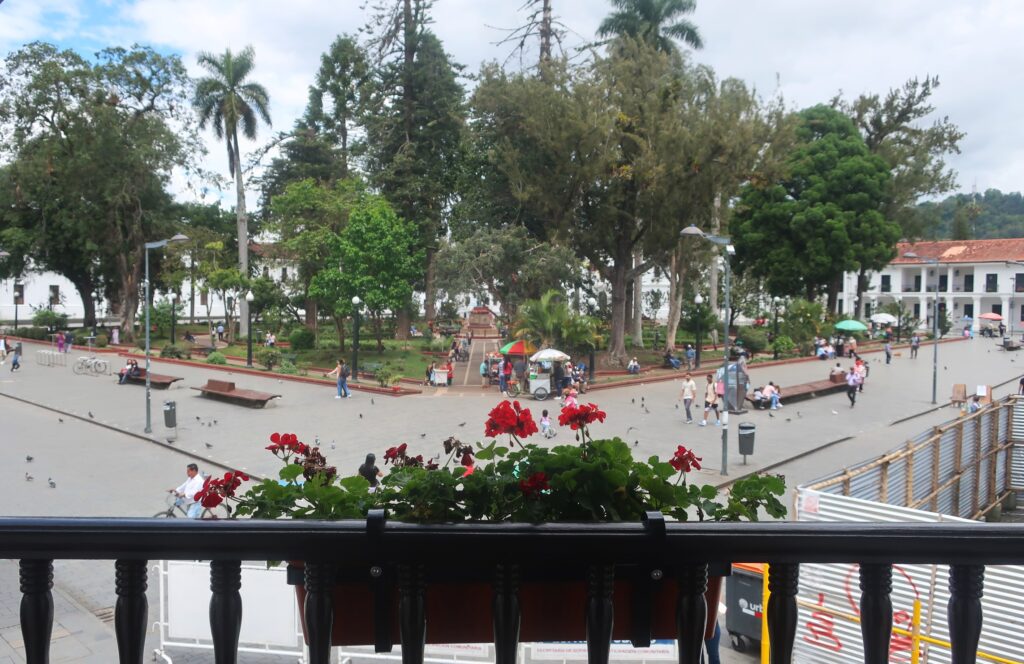
We are not surprised that Colombians are just as appreciative of Donald Trump’s comedic genius as everone else in the world. These posters feature The Donald and his henchmen.
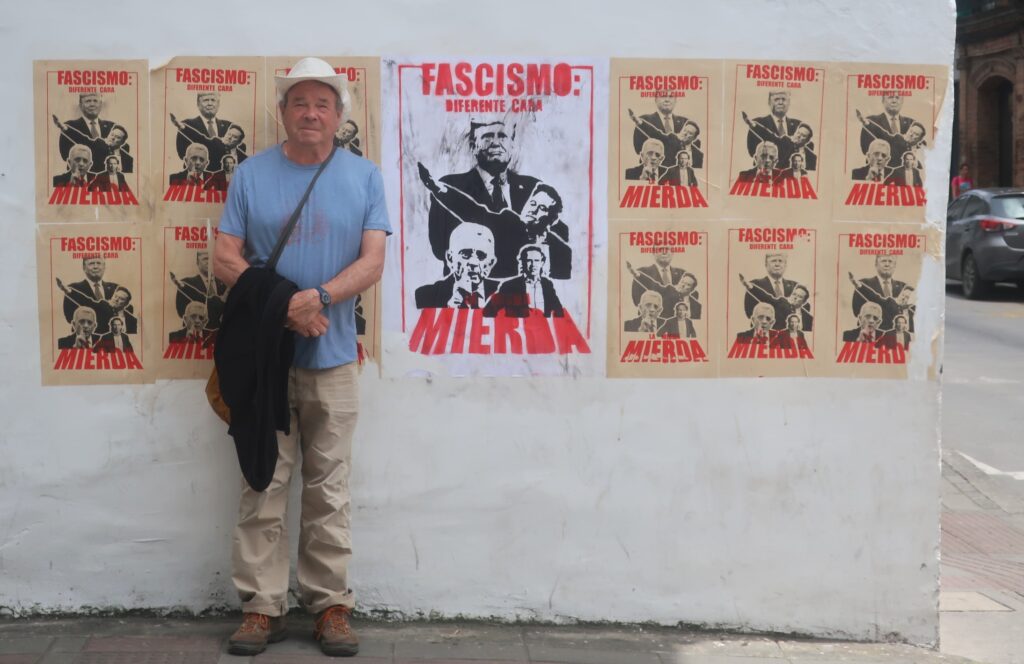
Popayán is one of the oldest towns in Colombia. It was founded in 1537.
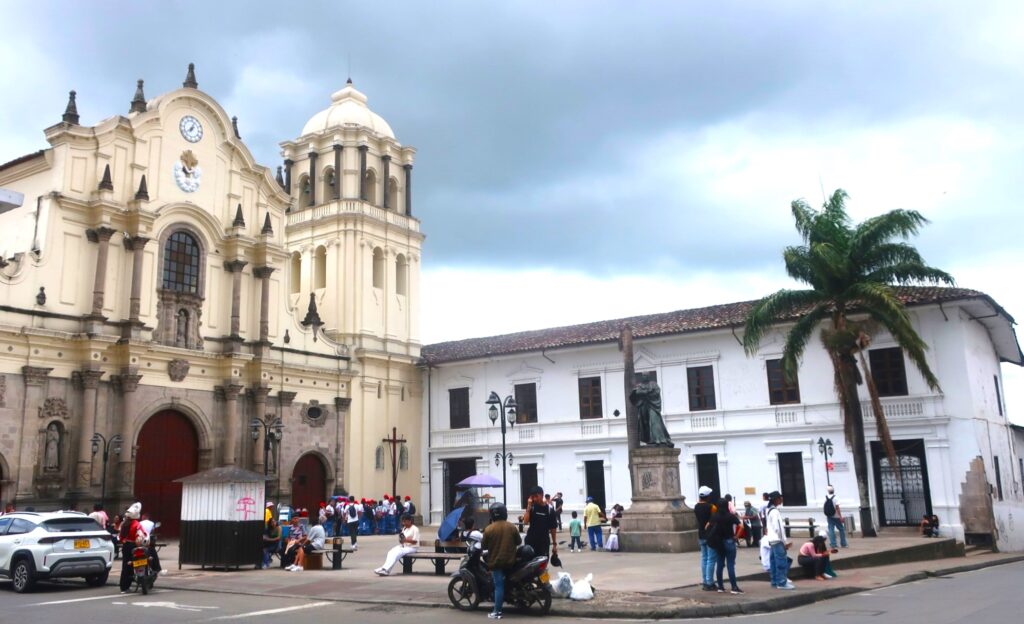
When we depart, we head for San Agustín, via a twisty, potholed mountain road. Lots of thick jungle, and few people. It’s easy to see how this used to be a hangout for FARC rebels in the not-so-long past. It’s only 130-odd kilometres, but takes five or six hours to get there in a minivan.
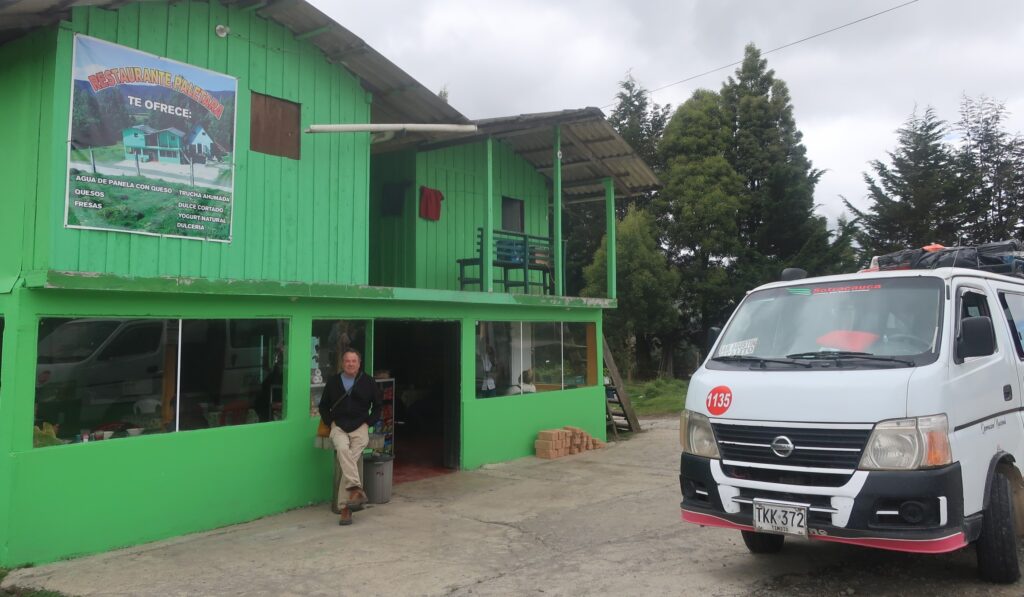
There is still lots of political violence in Colombia. (Much less than there used to be, but much more than Canada, which has essentially zero.) You have to pick your destinations carefully.
On arrival in San Agustín, we stay at the Finca El Maco. It’s run by Swiss people, so it’s very nice.
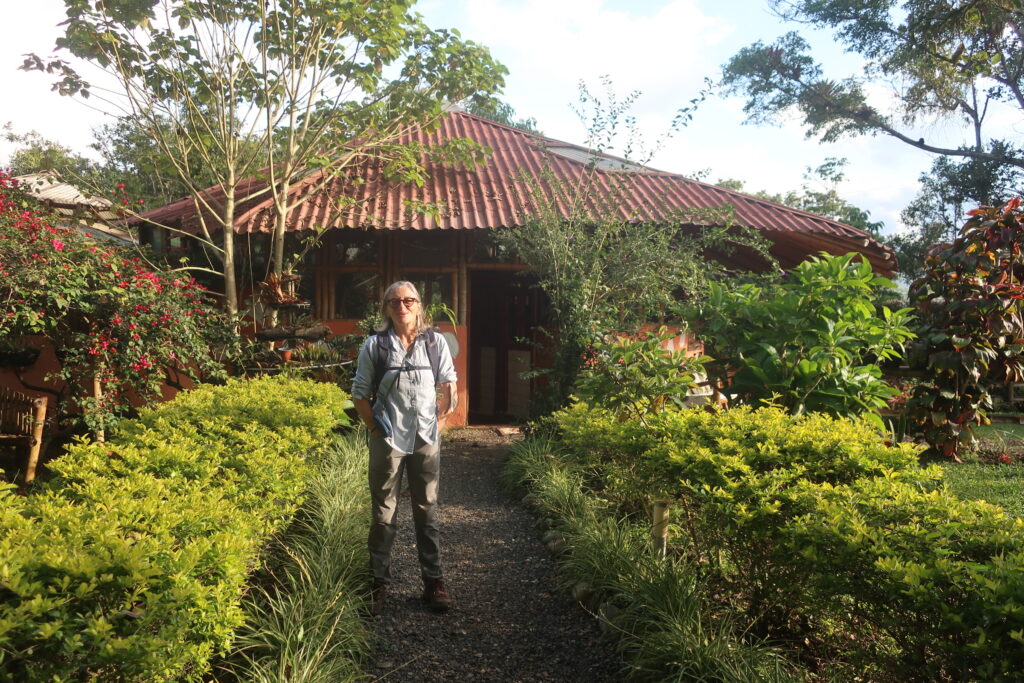
Colombia has these colourful buses known as chivas. They are for service in the more rural parts of the country.
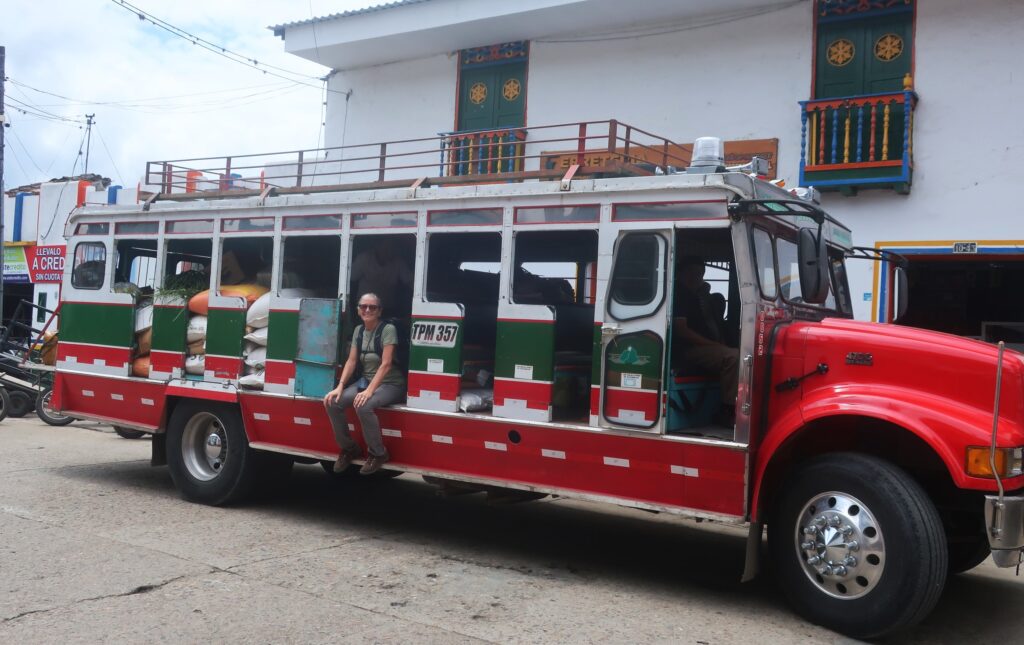
We are near the source of the Magdalena River, the major river in Colombia. From here it flows over 1,500 kilometres into the Caribbean Sea.
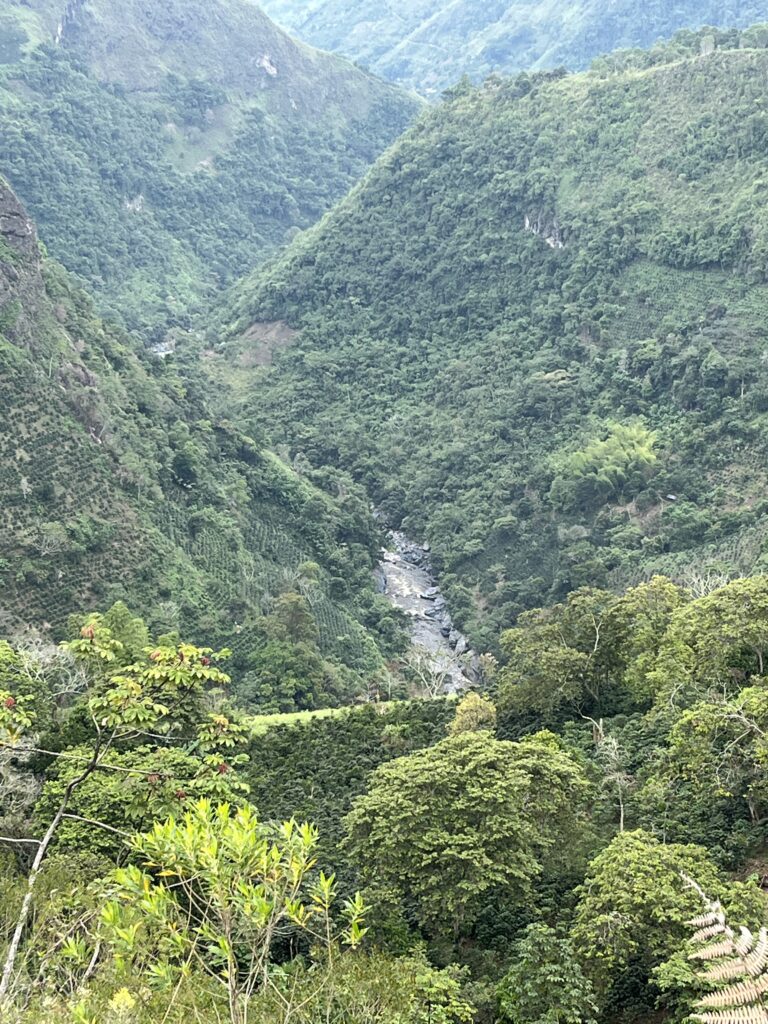
The main draw here is the presence of relics from the San Agustín culture, mainly large stone statues and tombs.
We go by horseback on one day, escorted by a guide.
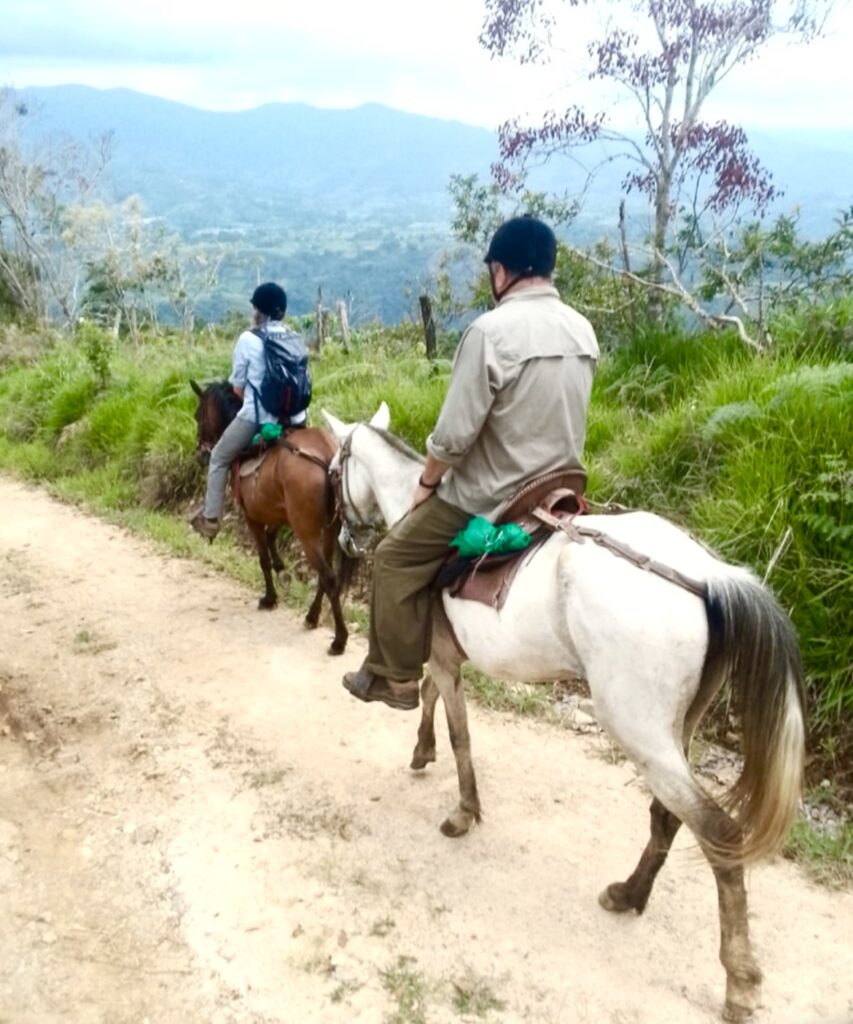
It’s a good way to visit the various sites, which are rather spread out.
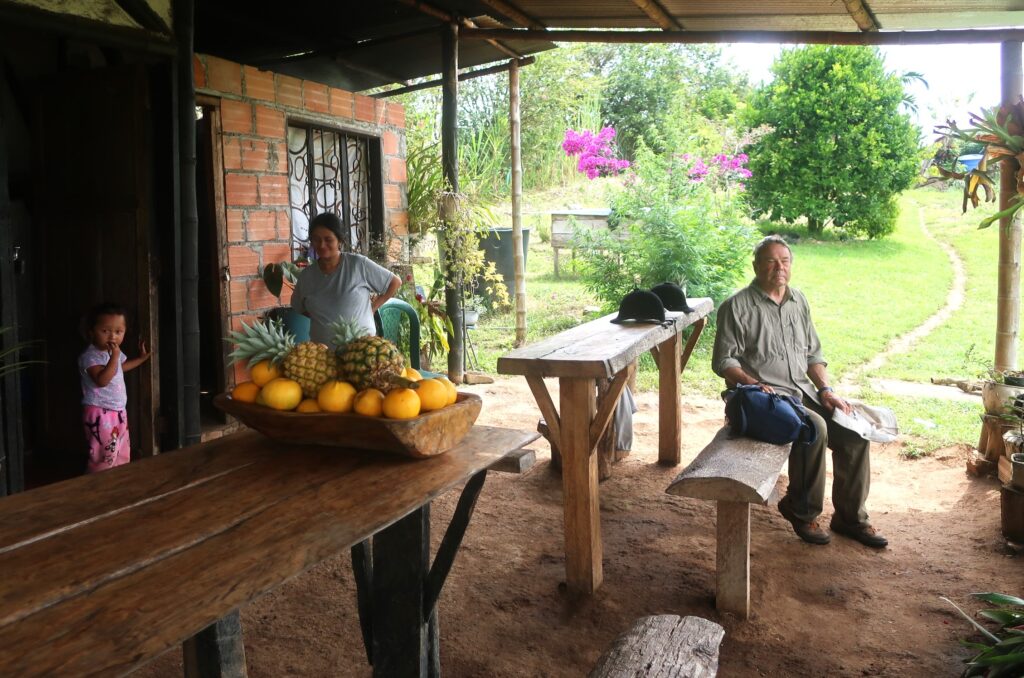
Colombia, like Peru, has many interesting pre-Columbian cultures. Until fairly recently, it was unsafe to travel in many parts of the country, especially the remote parts where most archaeological sites are found.
Many of the statues are over 2,000 years old.
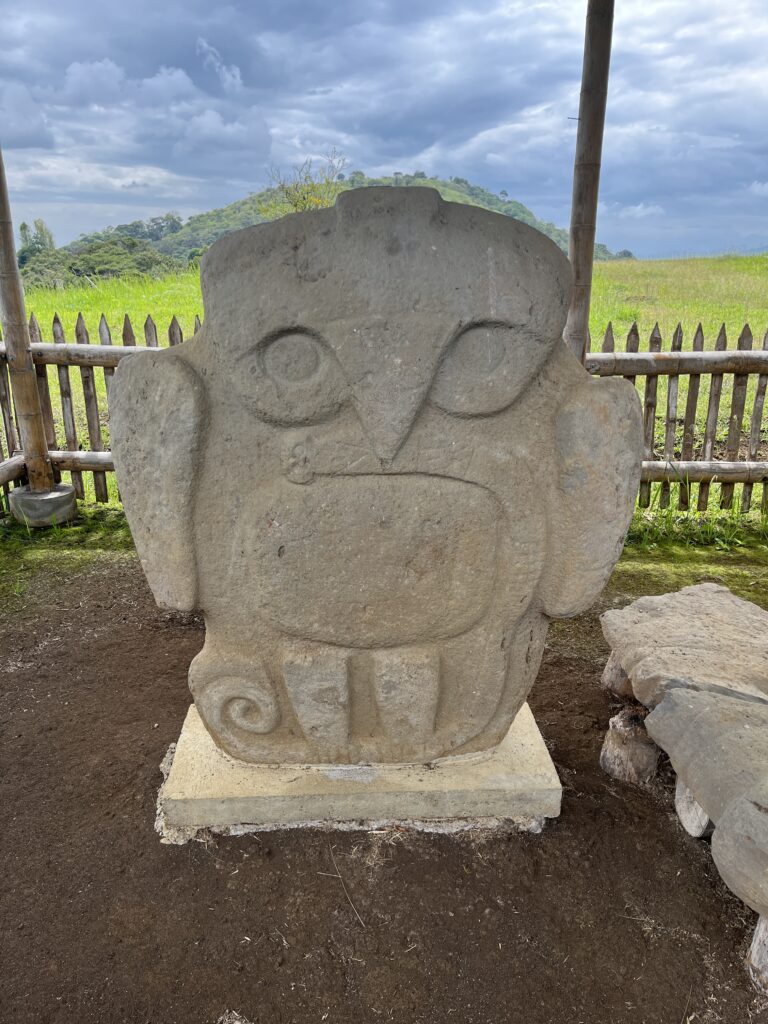
Some statues still have traces of the original paint. Almost all of the statues have what look like fangs. Apparently this is not due to an outbreak of vampirism in ancient Colombia – it’s meant to give the figures jaguar-like attributes. Jaguars were revered everywhere on the continent.
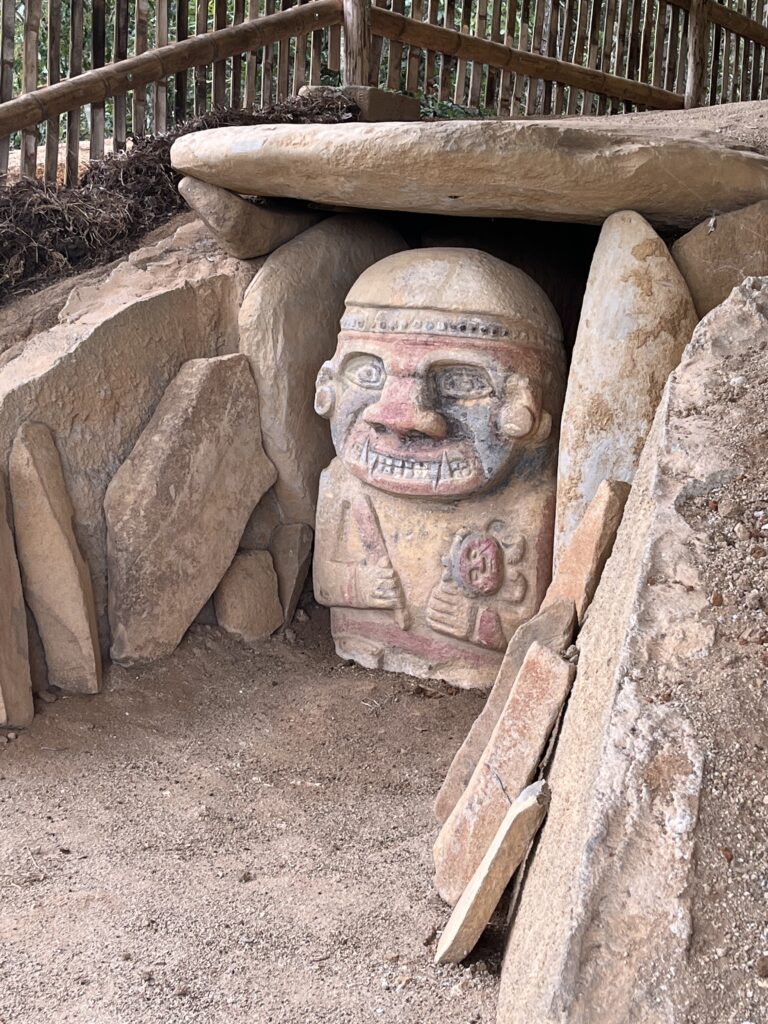
There are interesting similarities between many early South America cultures, even when they are thousands of kilometres apart. This tomb guardian shares characteristics that we found so amusing about the Decapitator in Tiahuanaco.
This statue is known as el partero, or ‘the birth-giver’ (but with a male ending, strangely).
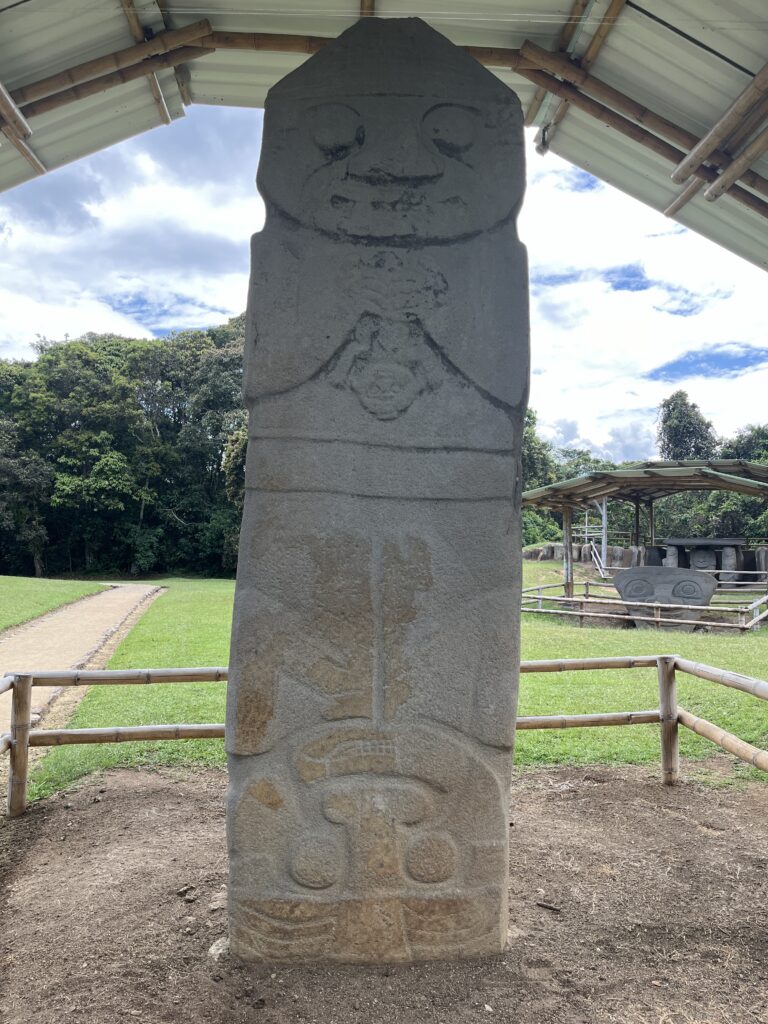
We are fortunate to find a small stone replica of this one to bring home.
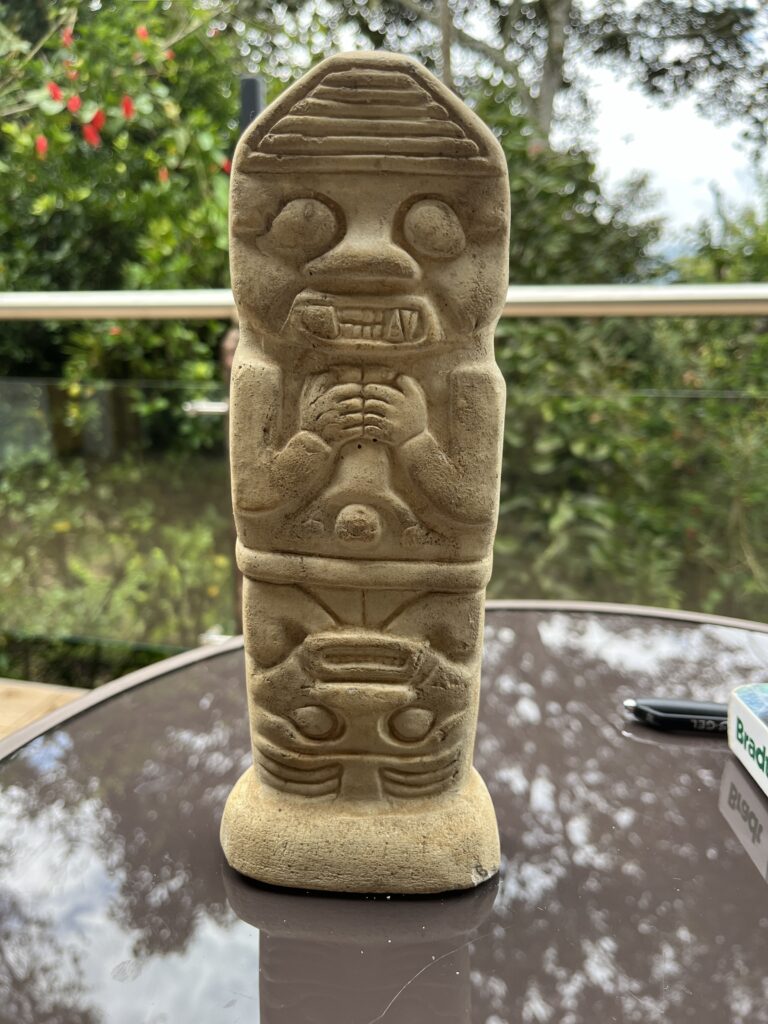
Next day, we visit the nearby small museum. Attached to it is a trail with statues brought from elsewhere in the region.
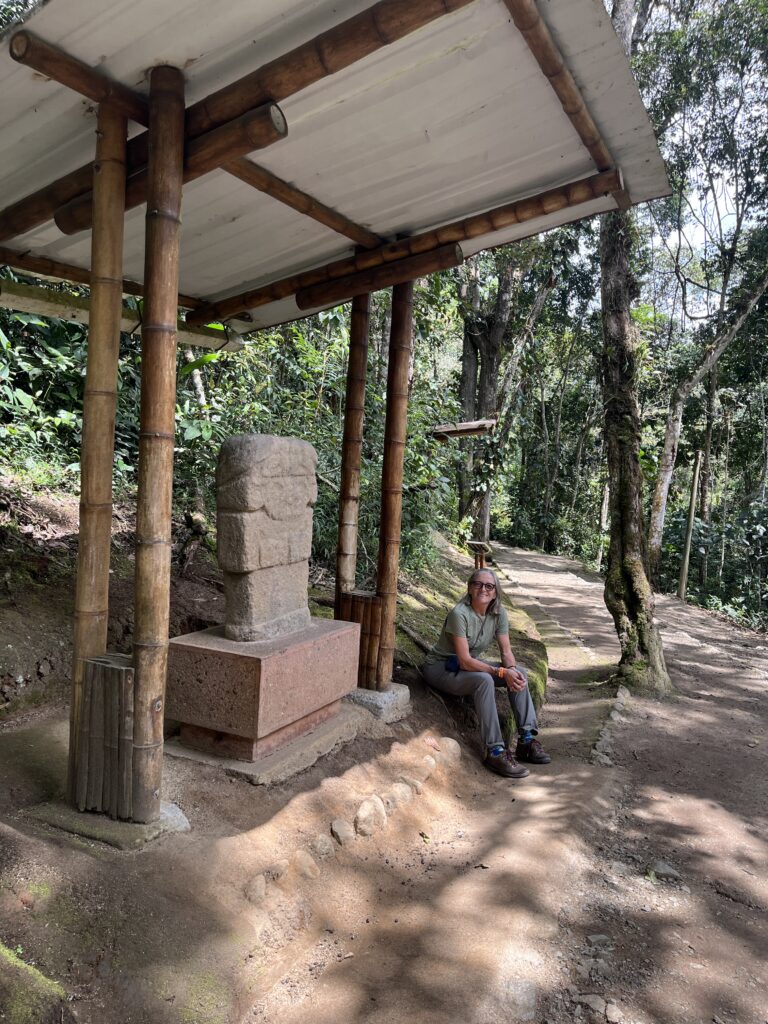
There are many tombs in the area. The San Agustín people (nobody knows what they called themselves, or what language they spoke*) were buried in stone sarcophagi, under large flat stones, and covered with earth. That is, eminent persons got this treatment.
* I’ve complained before about ancient cultures that didn’t have the foresight to come up with a written language, thus leaving we moderns in the dark about their motives for doing things one way and not another.
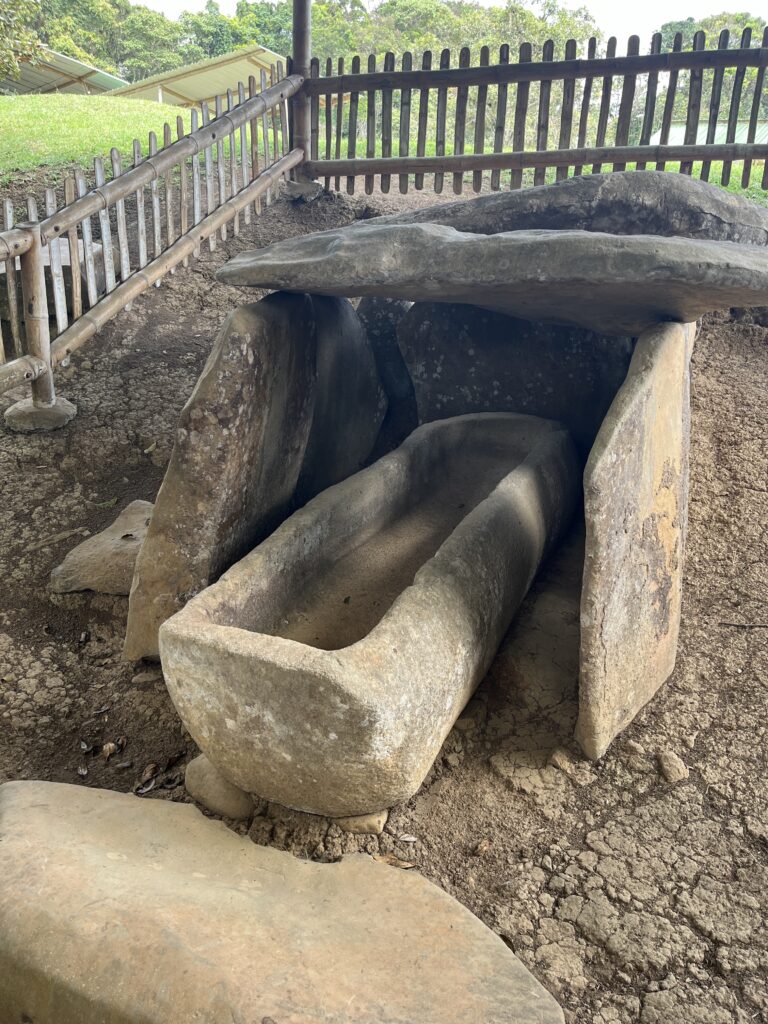
Probably the most beautiful butterfly I’ll ever see in my life. A bit of research tells us it’s a Periander Metalmark.
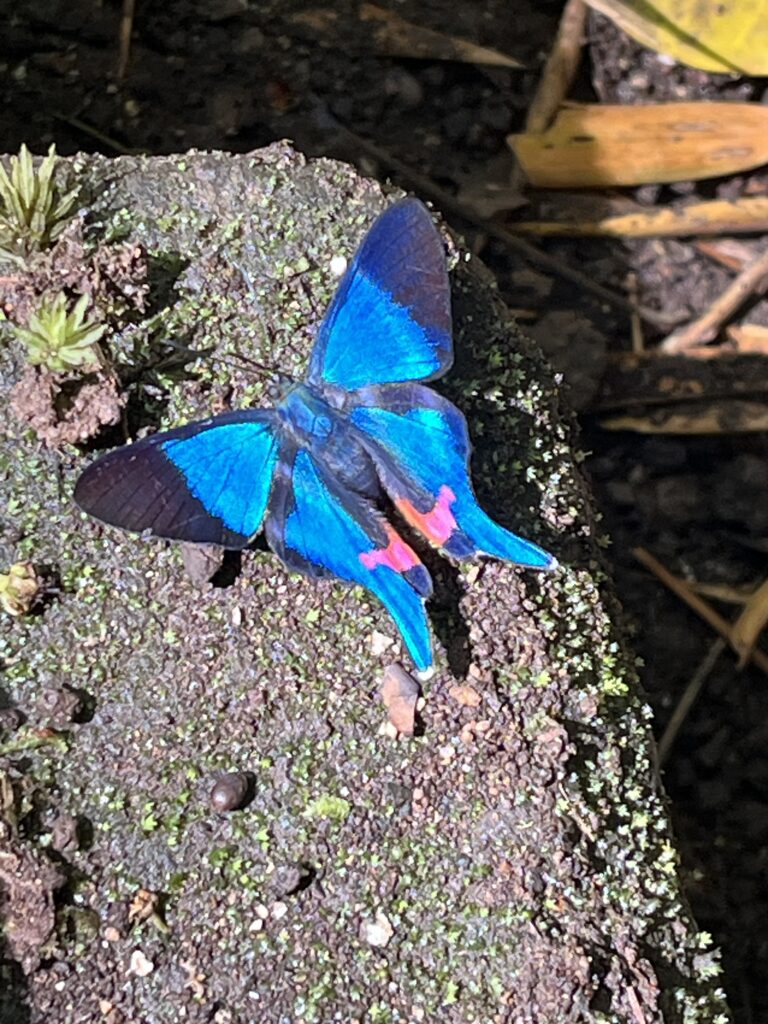
Here’s an unusually jolly-looking example.
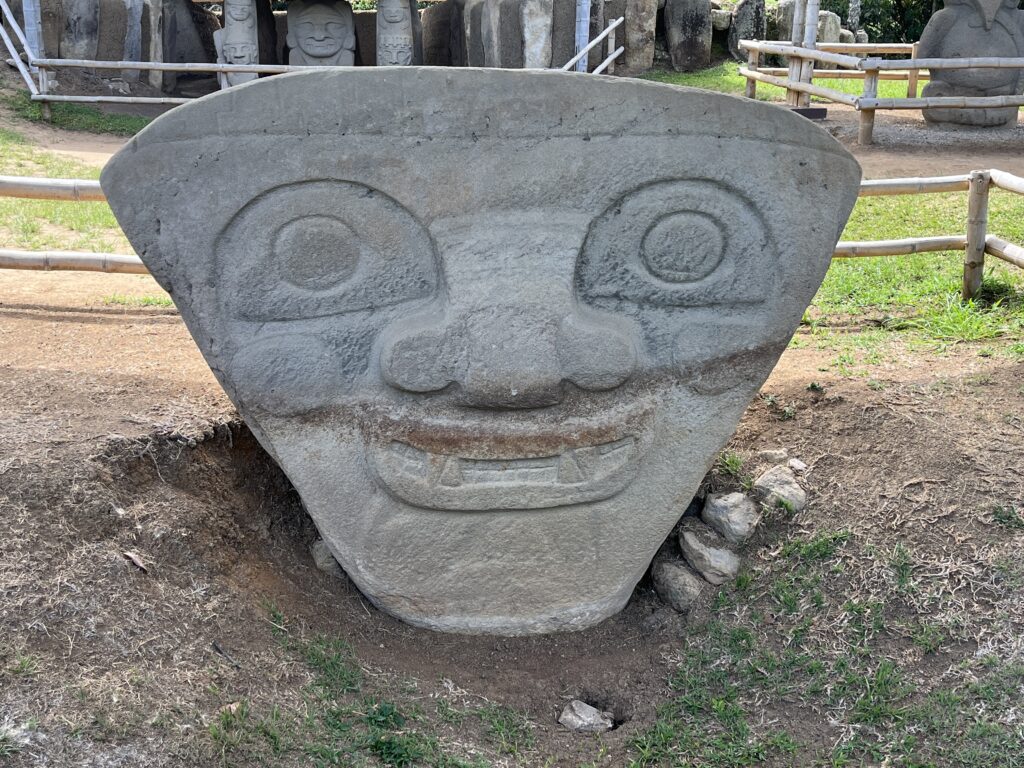
We mentioned that guinea pig is a popular meal throughtout the Andean countries. This restaurant is named ‘the Little Oven’. I guess you don’t need a big oven – guinea pigs are pretty small.
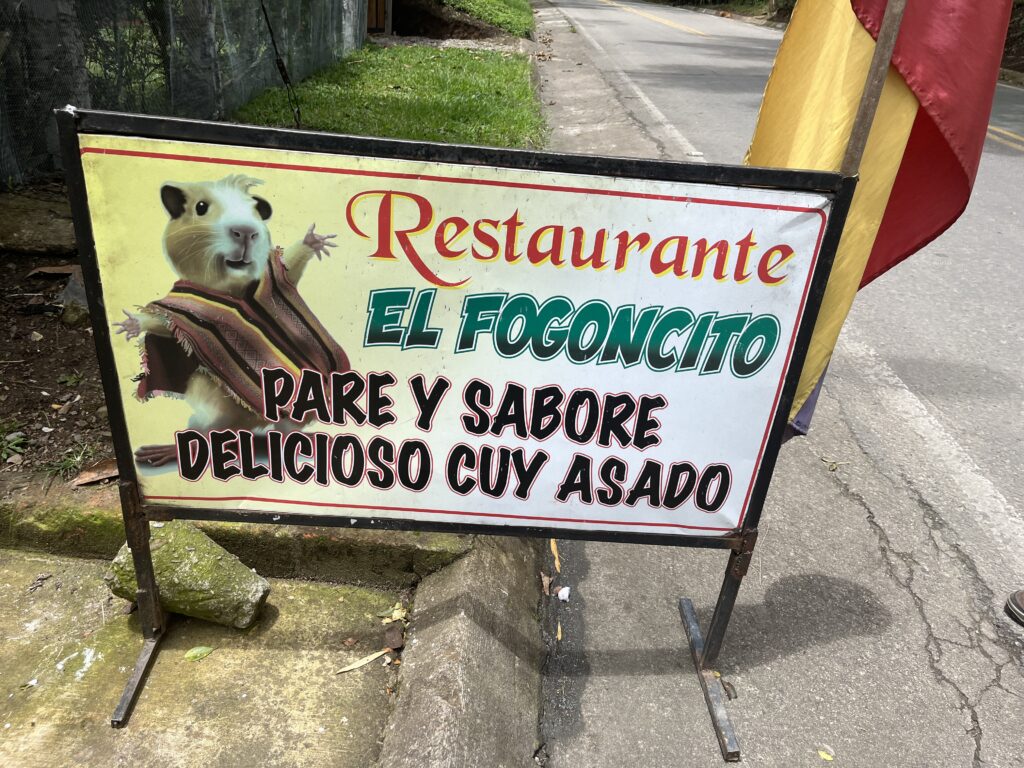
Our next stop on the way to Bogotá is the Tatacoa Desert. Have we mentioned that we like deserts?
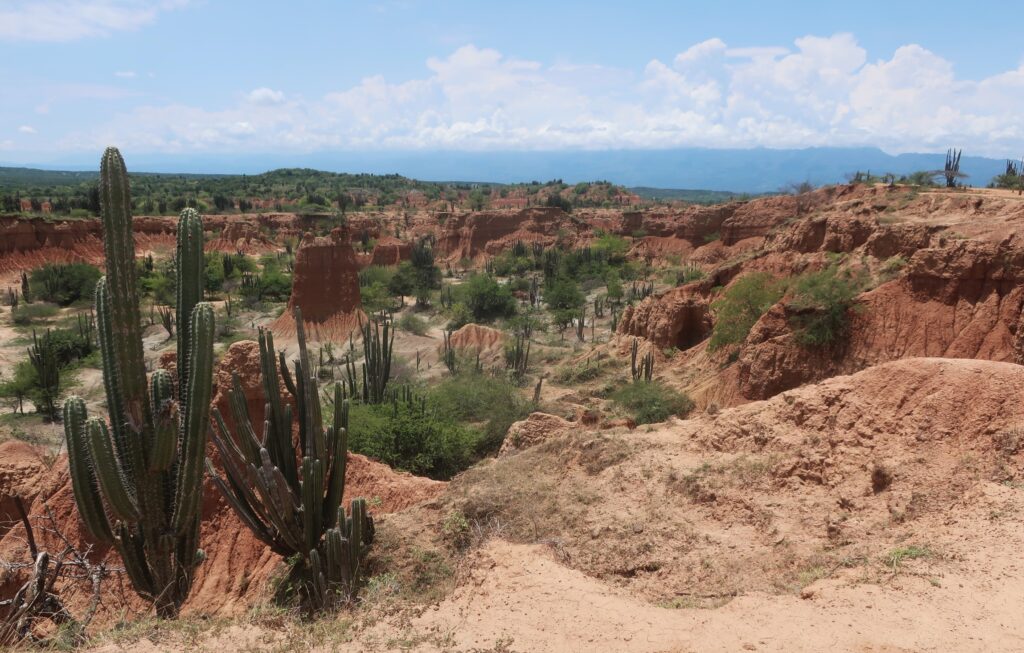
It’s a challenge getting out here. We have to take a tuktuk (!) from the nearby town of Villavieja to get here because the roads are impassible for non-4X4 vehicles. Our accommodation is basic.
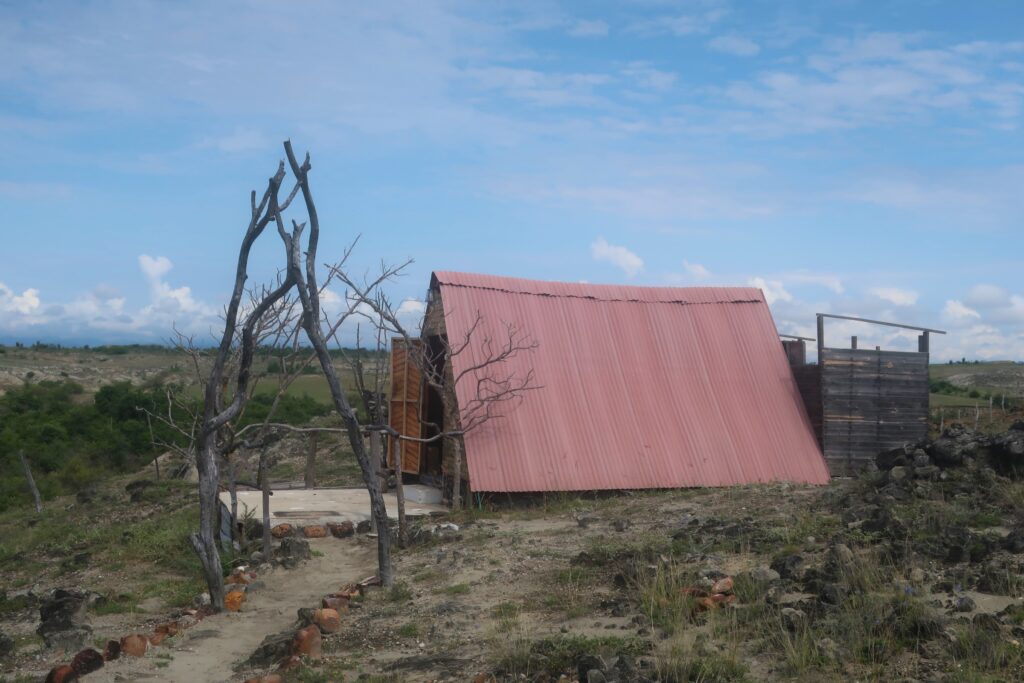
It’s comfortable enough inside, with a fan and mosquito net.
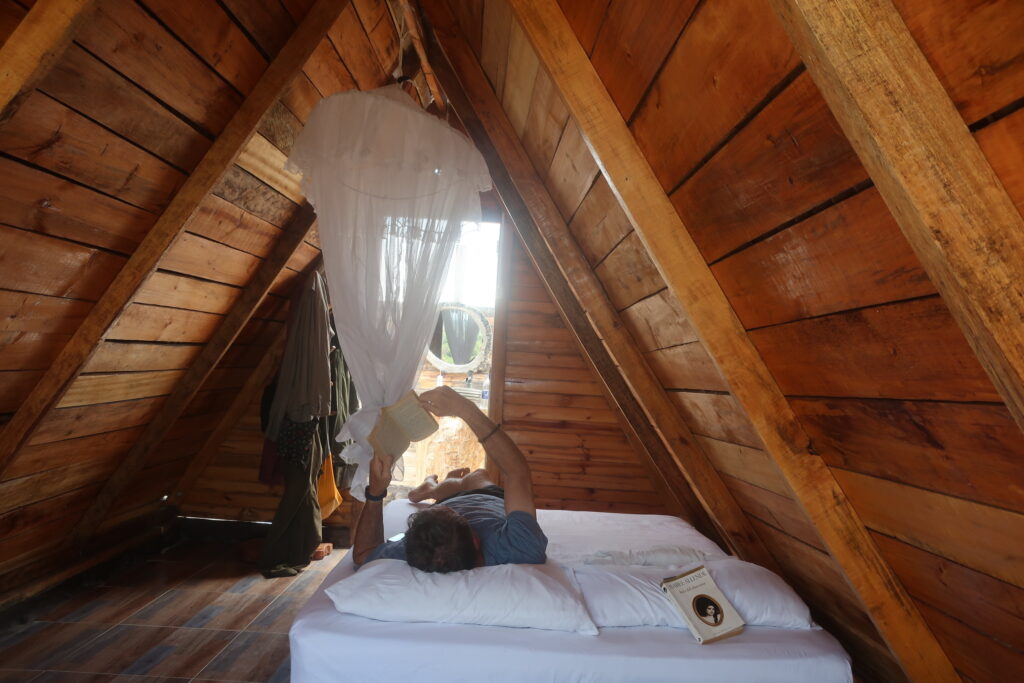
It has one of these outdoor bathrooms that Maria really likes.
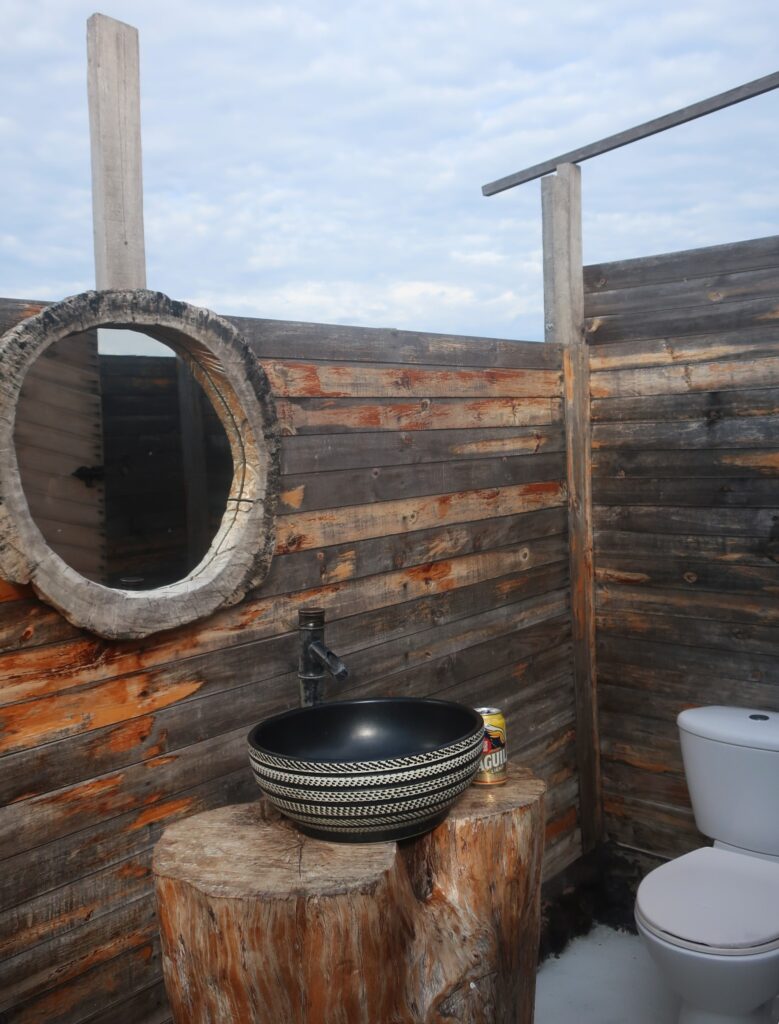
A guided hike is included.
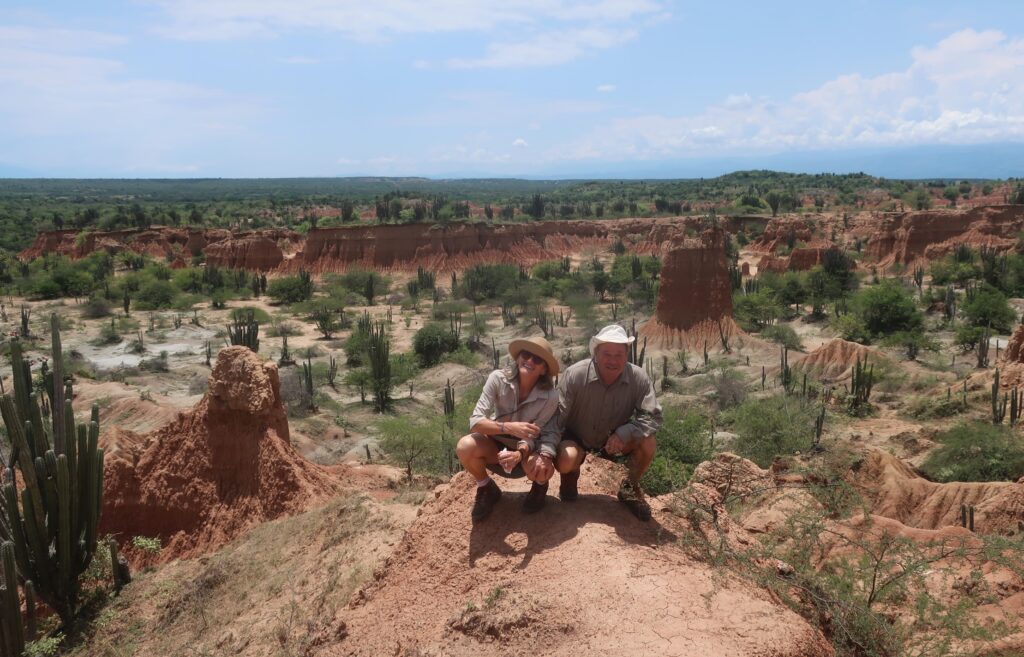
Like many deserts, there is good clear sky for astronomical observations. We go to a session after dark and see things like the planet Jupiter and the Pleiades through a telescope..
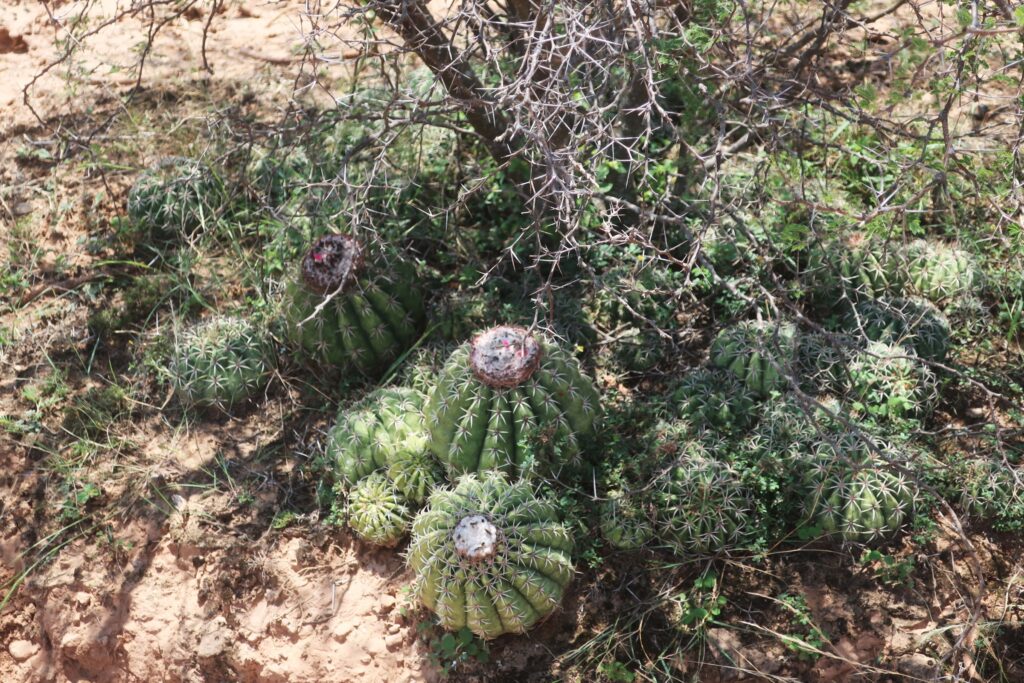
Besides the ochre-coloured desert, there is a grey desert.
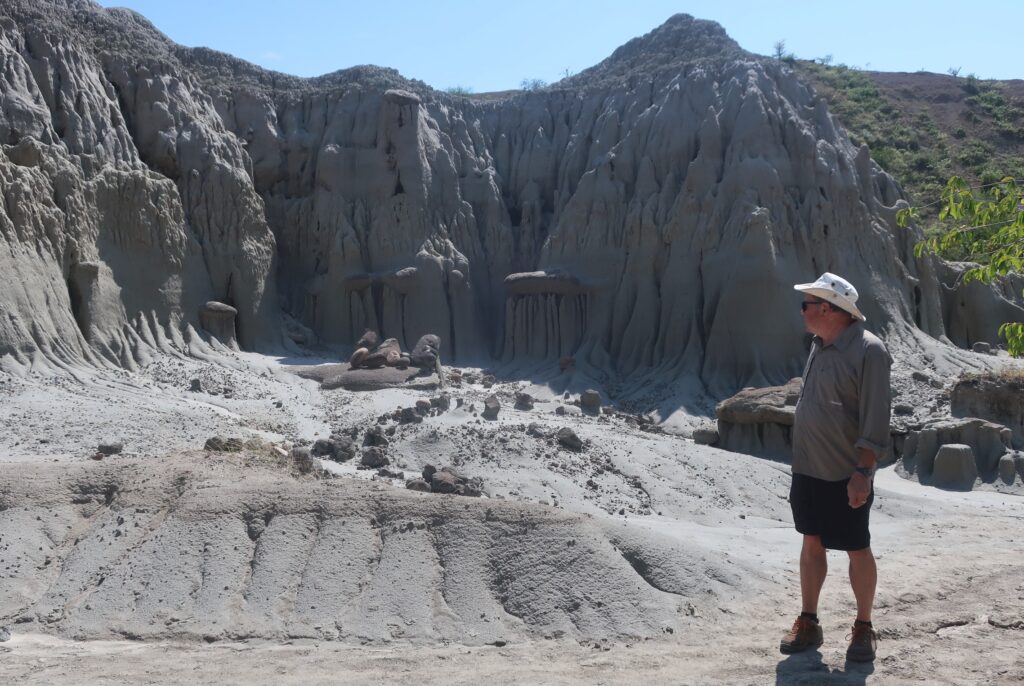
Our last stop on this trip: Bogotá. Bogotá may not be the most attractive capital city in Latin America. But we’re staying in the La Candelaria neighbourhood – everything we’re interested in seeing is within walking distance.

One misty afternoon, we take the cable car to Monserrate, a mountain overlooking the city. It’s over three thousand metres high.
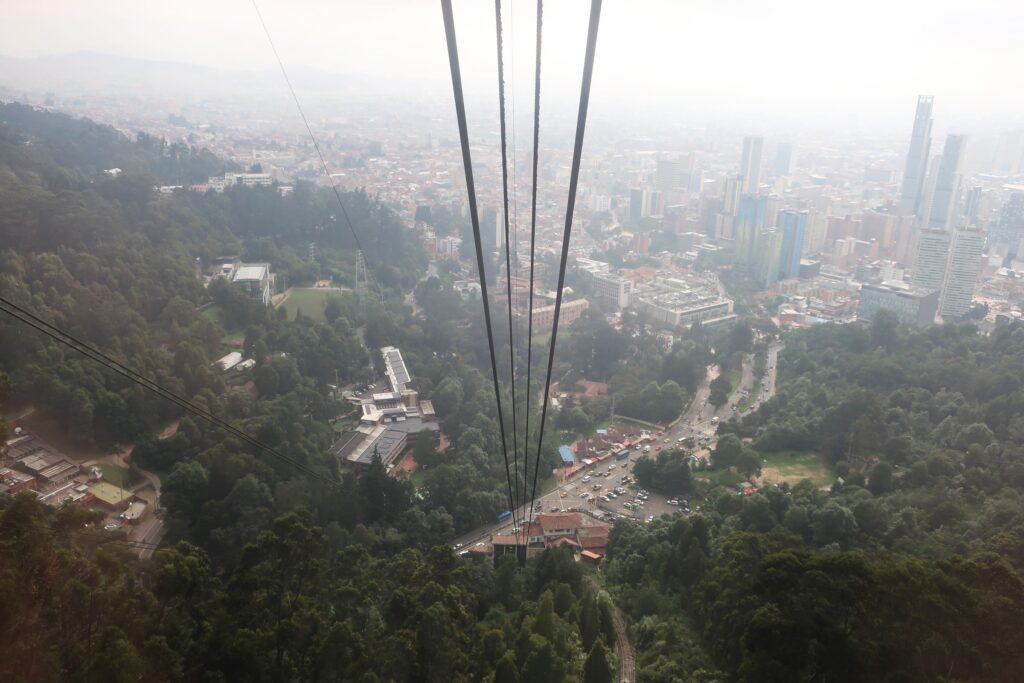
There are also univerities and libraries nearby, so there are lots of cafes and restaurants around.
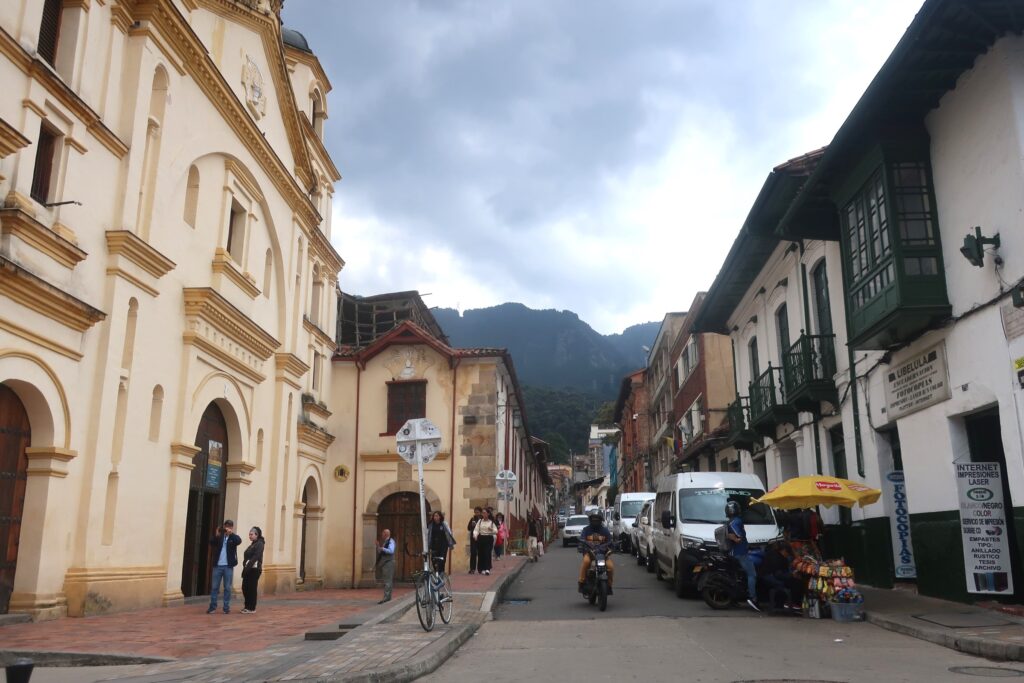
A must-see is the Museo de Oro. It contains hundreds – maybe thousands – of amazing pieces in gold that escaped being melted down by the Spaniards.
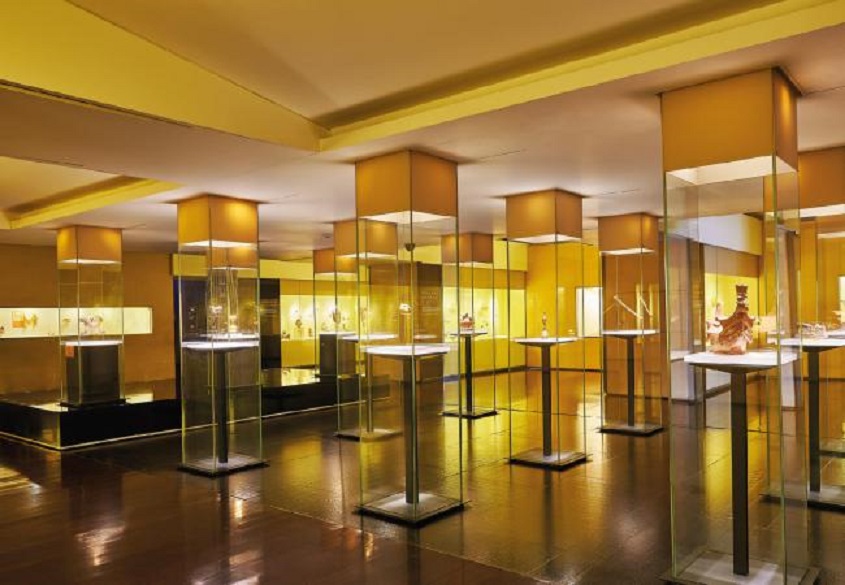
This exhibit really caught my eye. It’s a stylized jaguar, with emerald eyes and spots made up of dozens of individually-dangling gold bits.
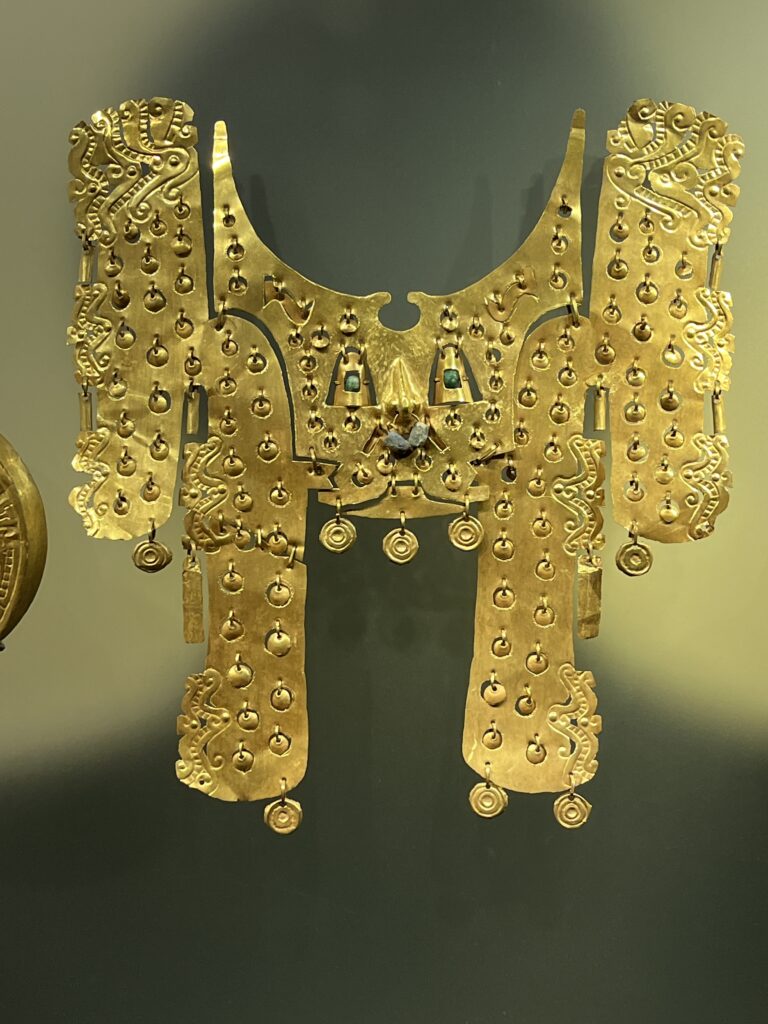
Another must-see is the Botero Museum.
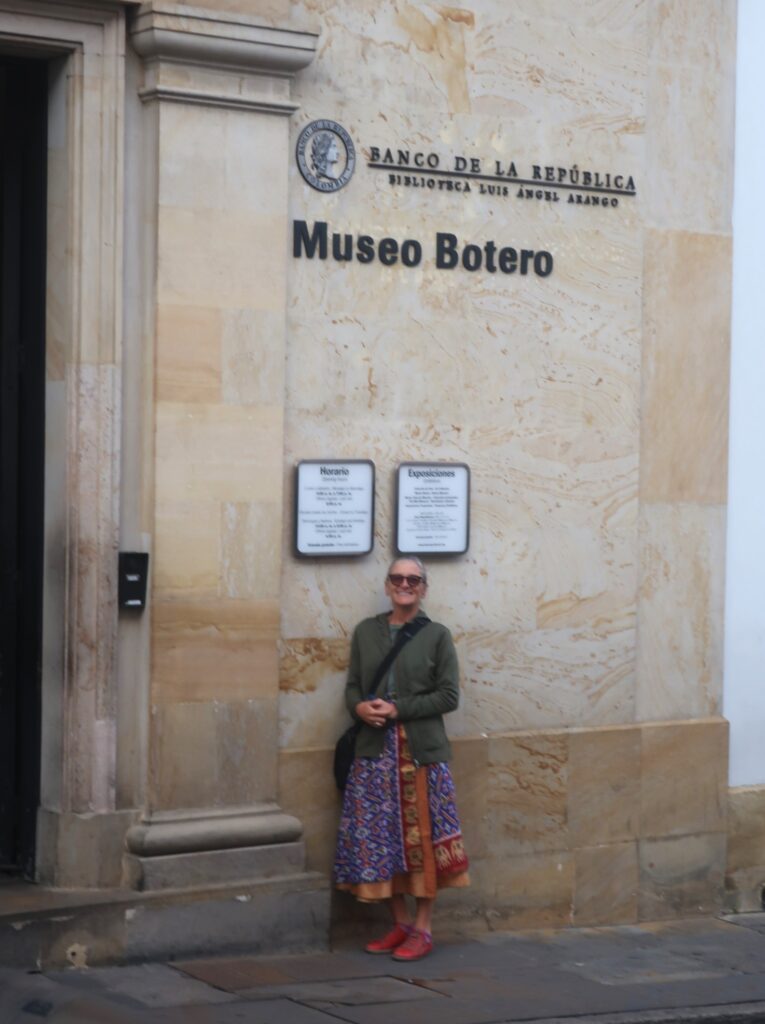
Besides Botero’s impressive personal collection of art by other people, the galleries are lined with his signature plump images. Even the vegetation and animals are plus-sized.
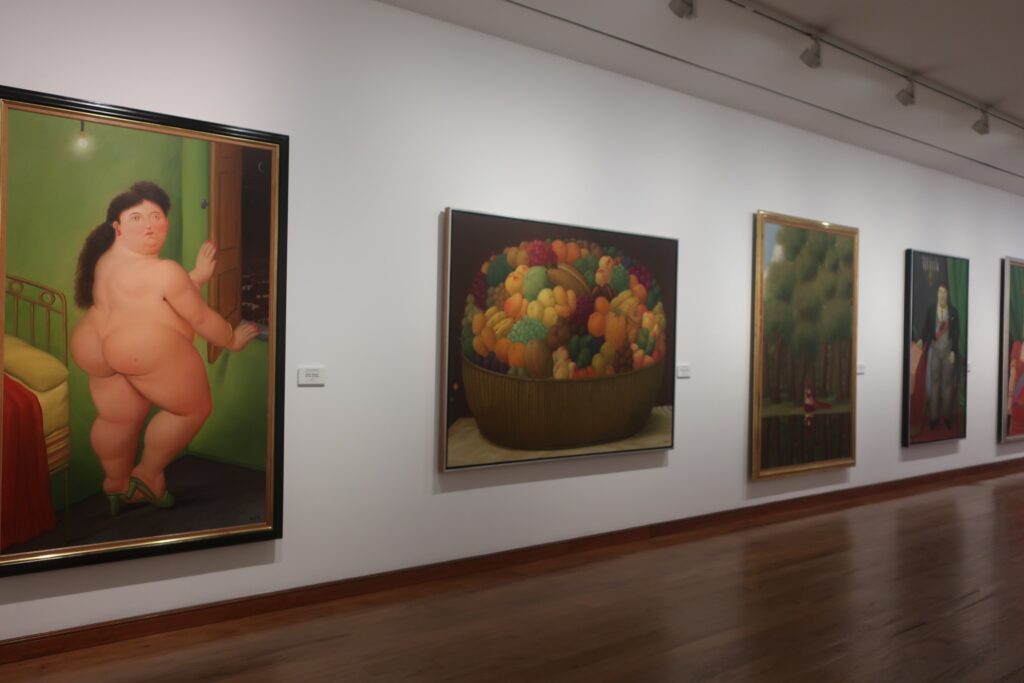
Because we are in Colombia, we have to take advantage of the coffee culture. In the fancy-schmancy Café San Alberto, we have a personal barista come to our table and make suggestions.

We visit the newly-renovated National Museum. The building itself is interesting – it’s a panopticon. This is a type of old prison design where a minimum number of guards can watch a large number of prisoners.
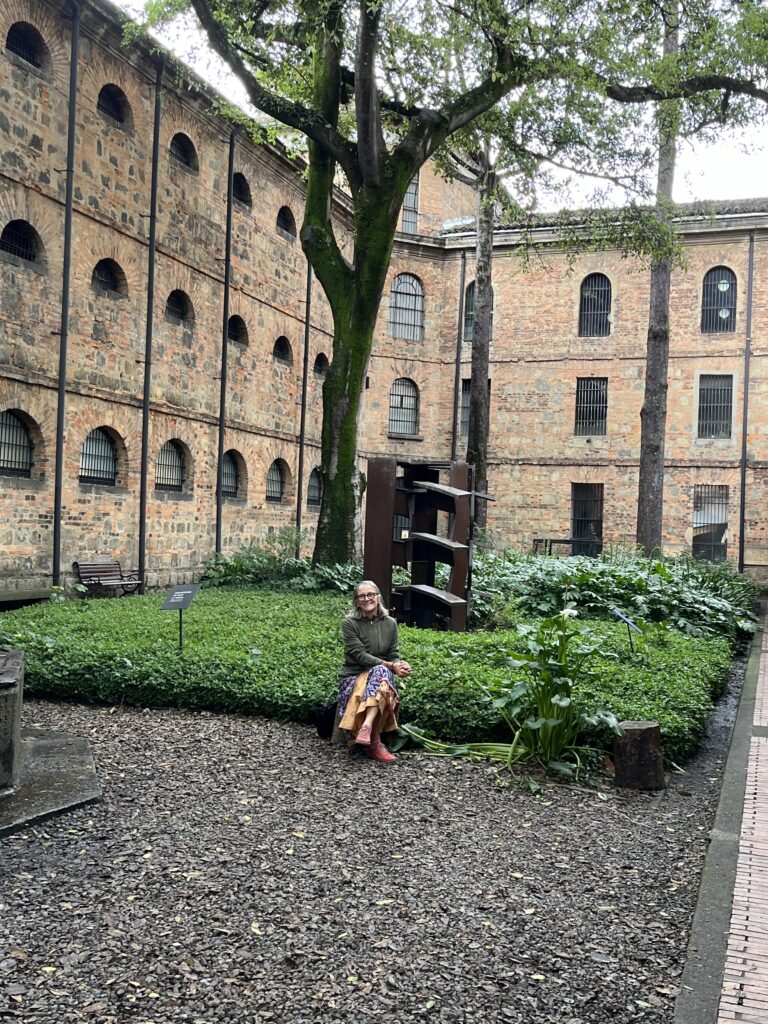
We have seen these before in a couple of places. One was in the notorious Port Arthur prison in Tasmania. Another was in Port Blair, in the Andaman Islands.
I finally satisfy my craving for a spicy chorizo from a street vendor. The proprietor insisted I sit down. I must’ve looked old and frail.
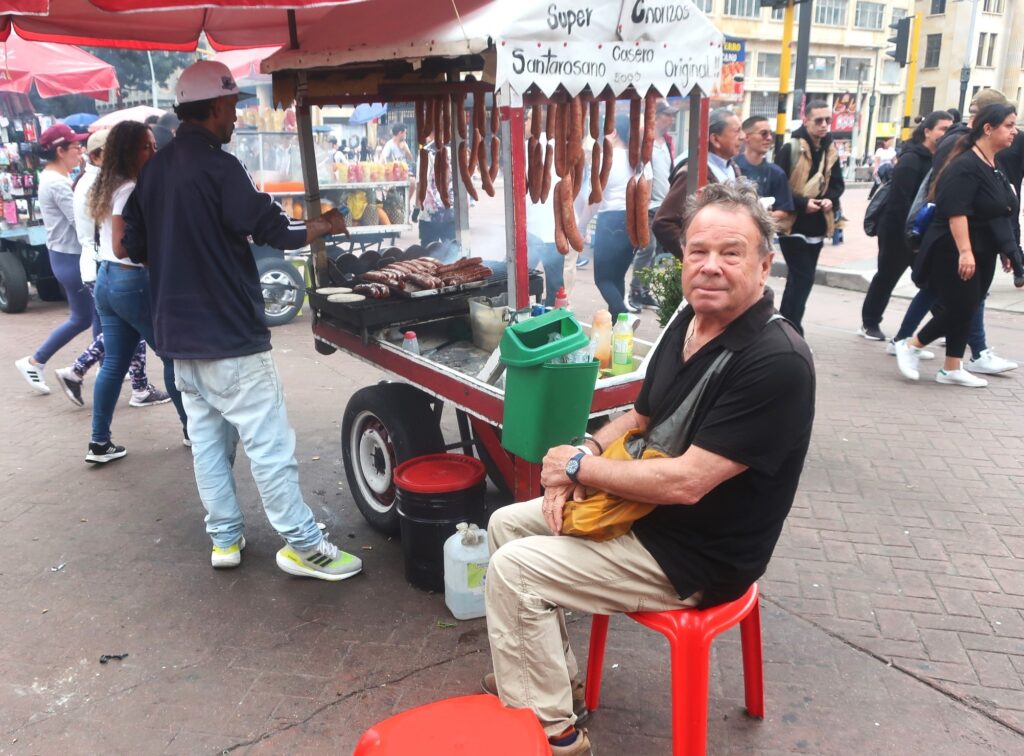
Speaking of meat – for our last dinner in Bogotá, we splurge on a rib fest at the La Siembra restaurant.
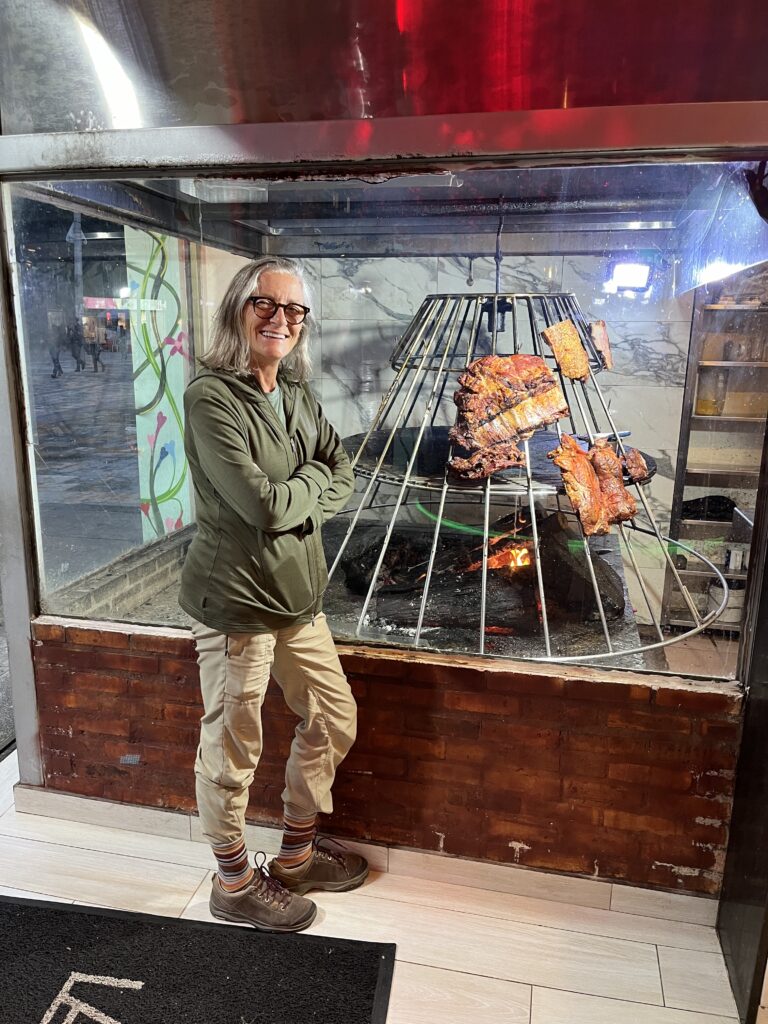
Sight or Insight of the Day
All journeys come to an end. We depart from Bogotá and fly home via Newark. Because of a severe storm, New York air traffic is stacked up. We have to land someplace in Connecticut to refuel. Finally, a short flight later, we arrive in Newark, where we’re told that our flight to Ottawa has been cancelled.
We spend the night in the airport Marriot Hotel (at our own expense).
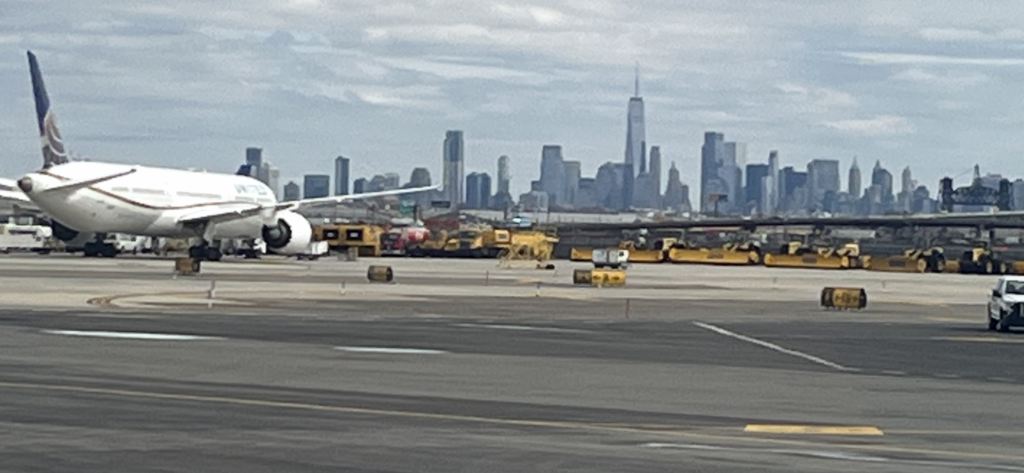
We arrive home the next afternoon after five months away. It’s been a wonderful trip. But it’s great to be back in Canada – safe, clean, quiet Canada.
“Home is where one starts from.” — T.S. Eliot
The only disadvatange is that now we feel the full force of the threat from the Orange Menace, the madman across the border. As we said in an earlier entry, may God have mercy on our souls.
